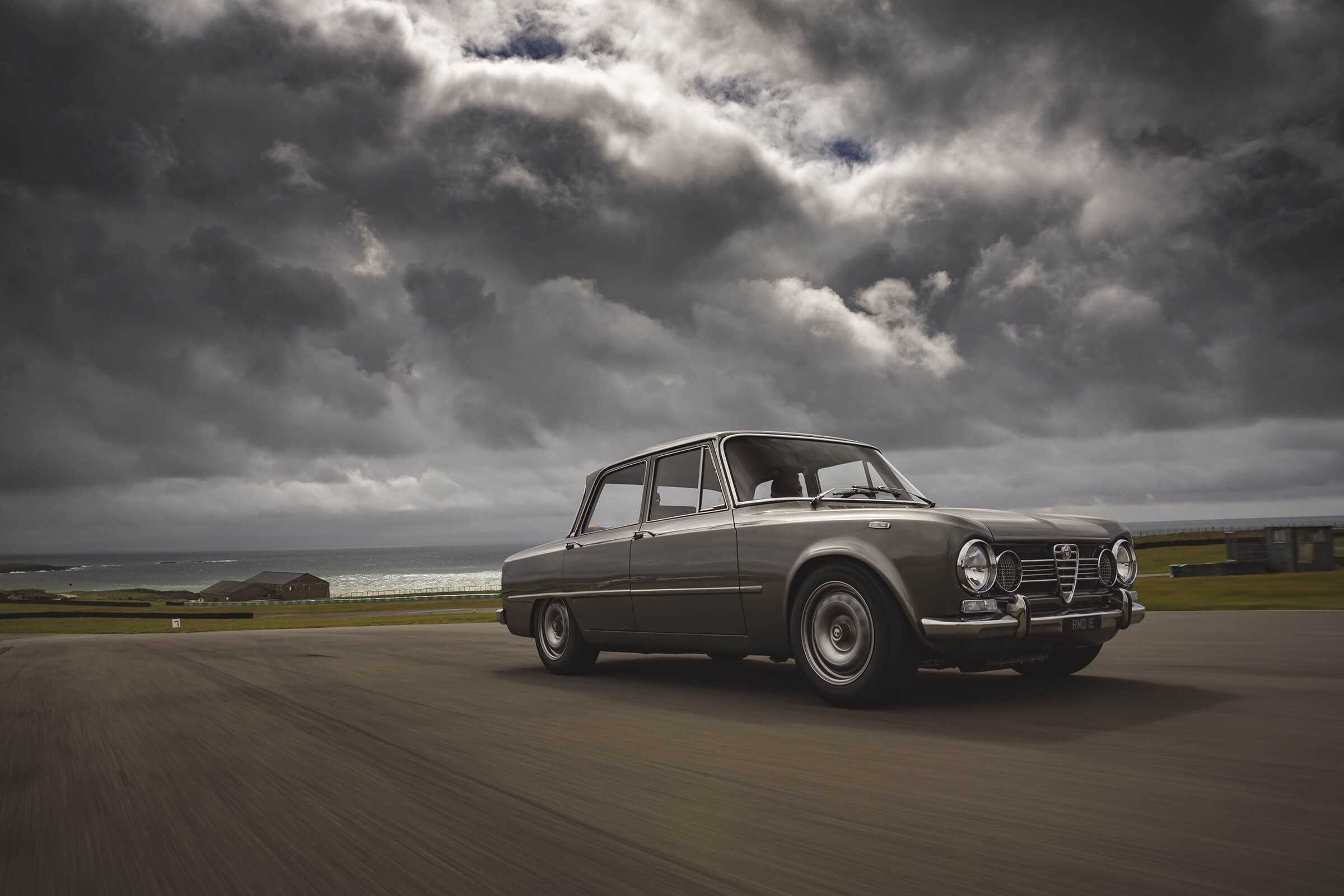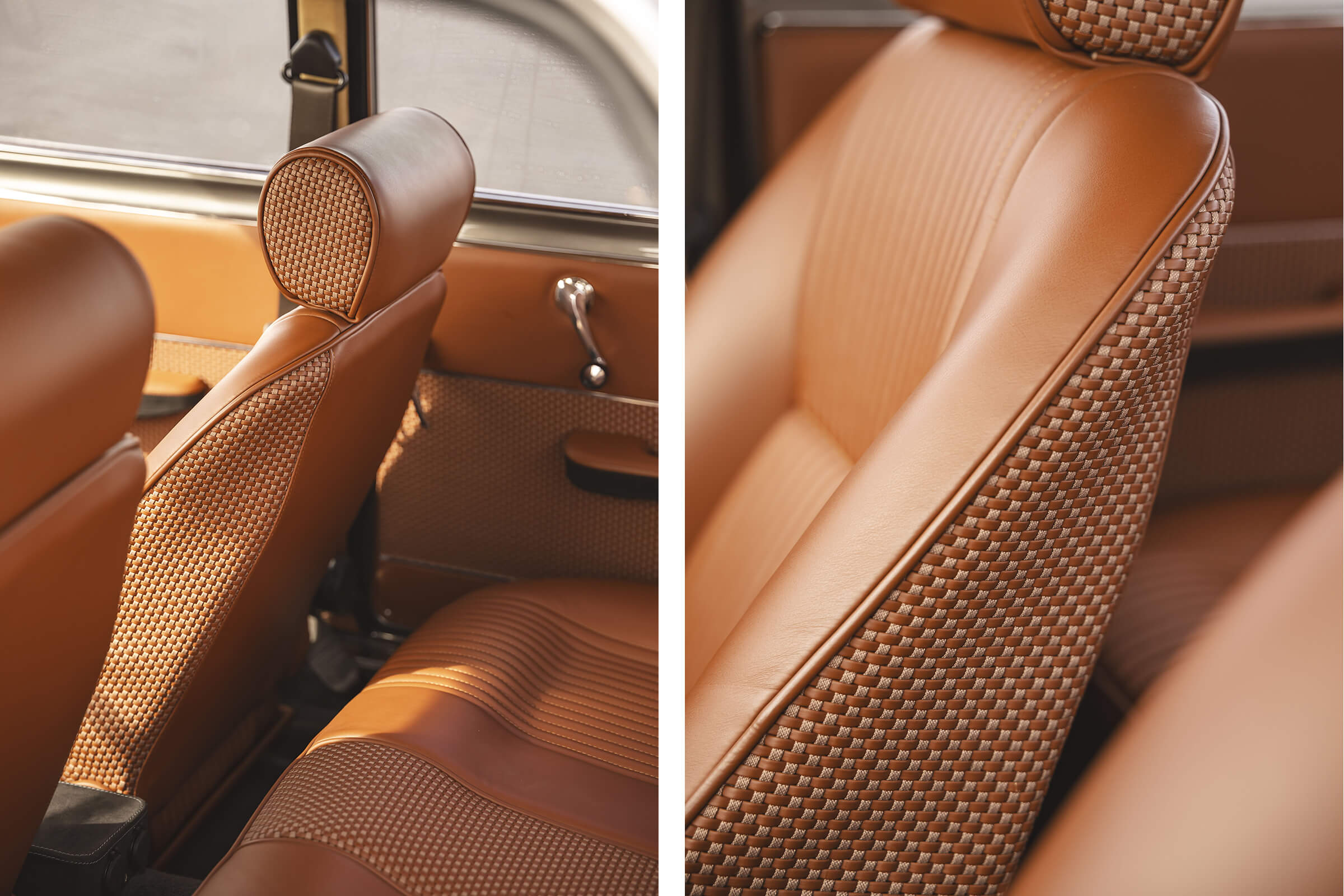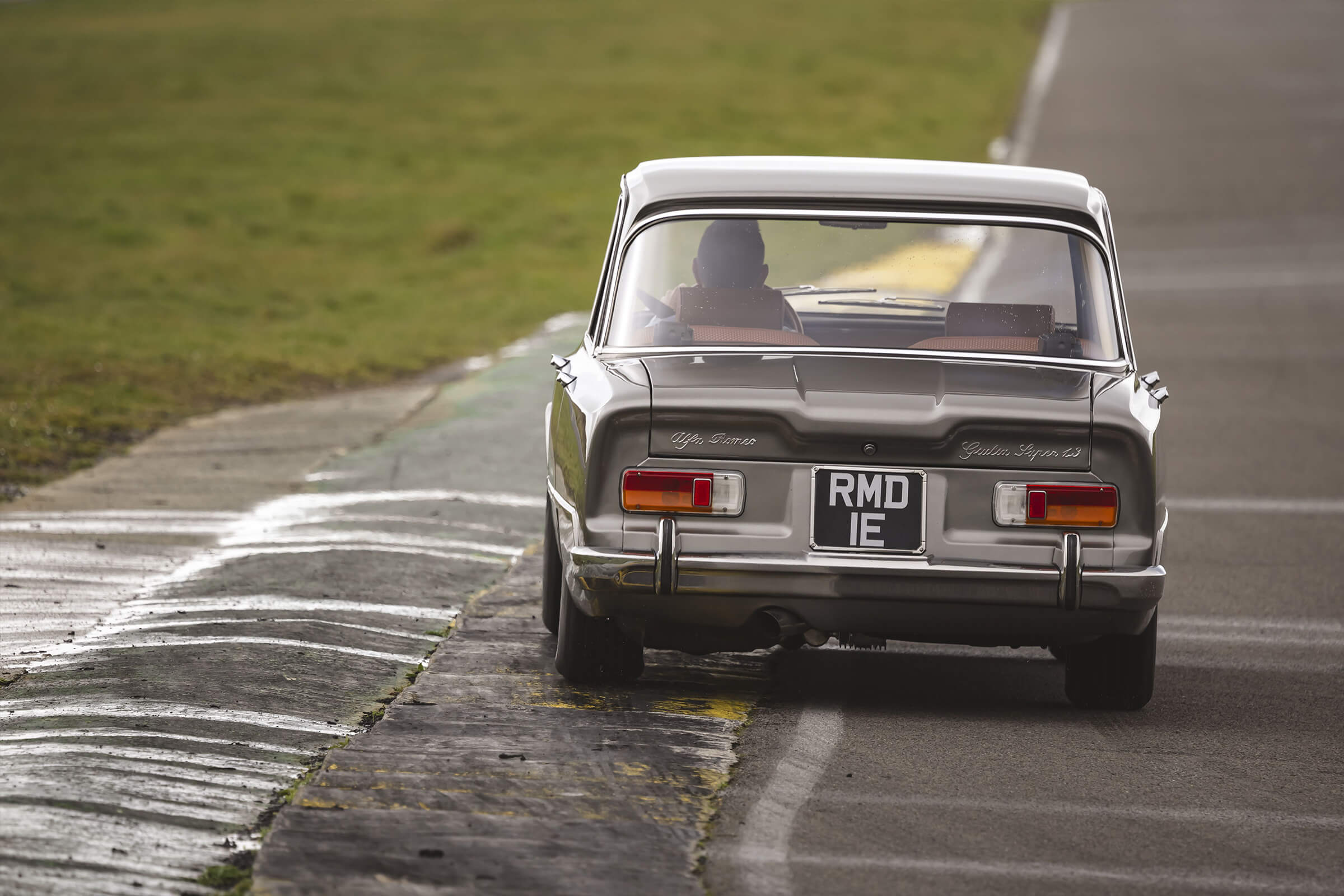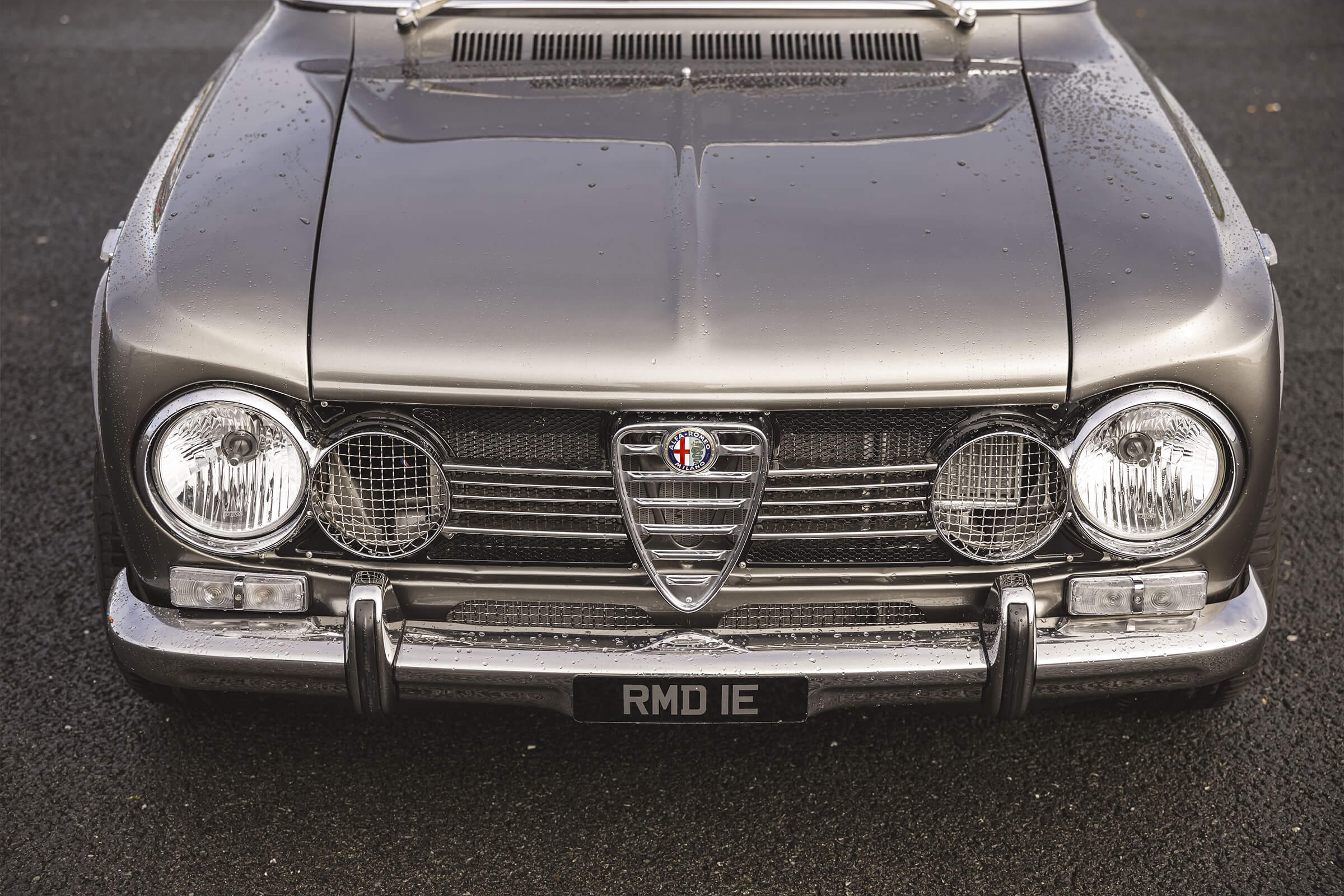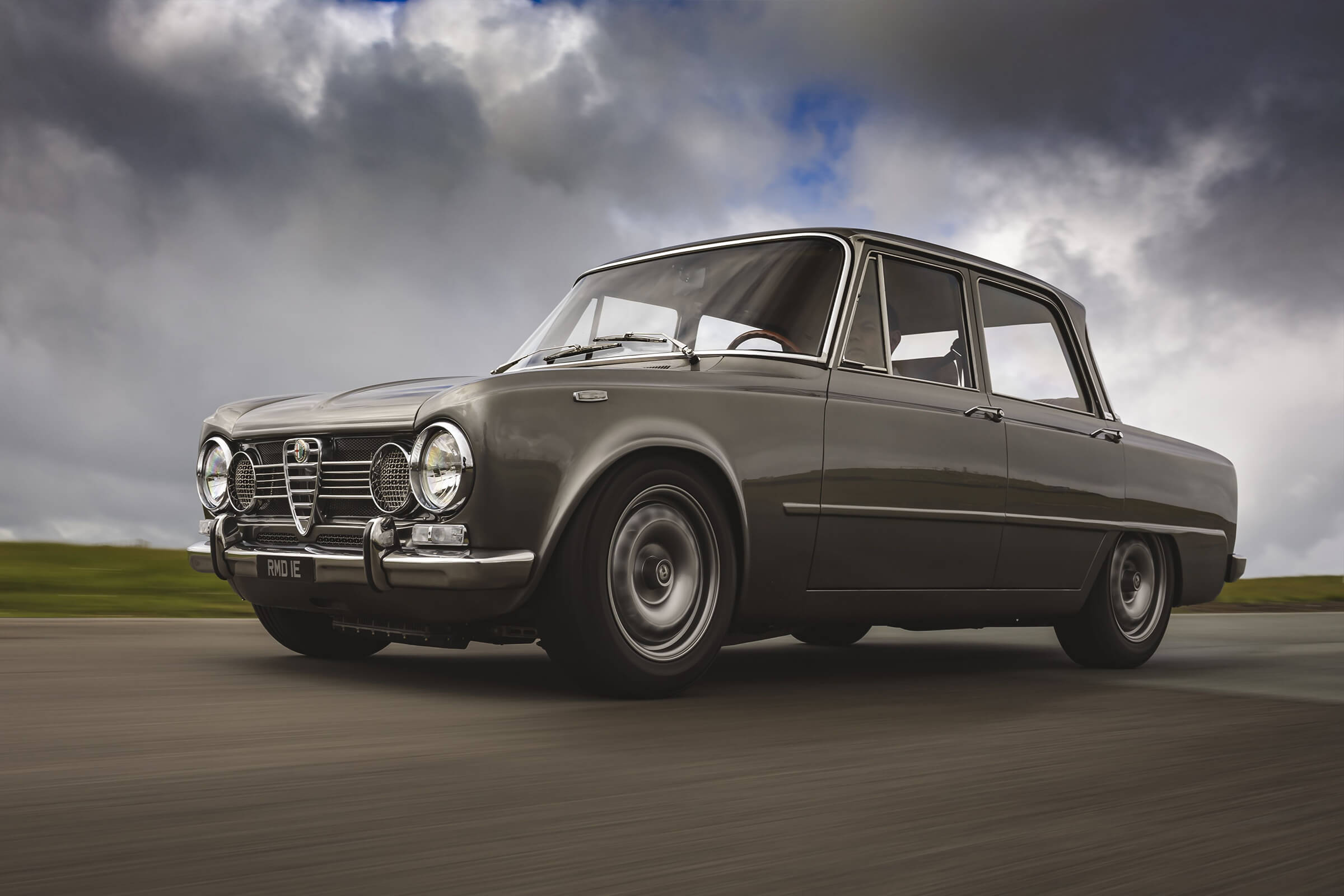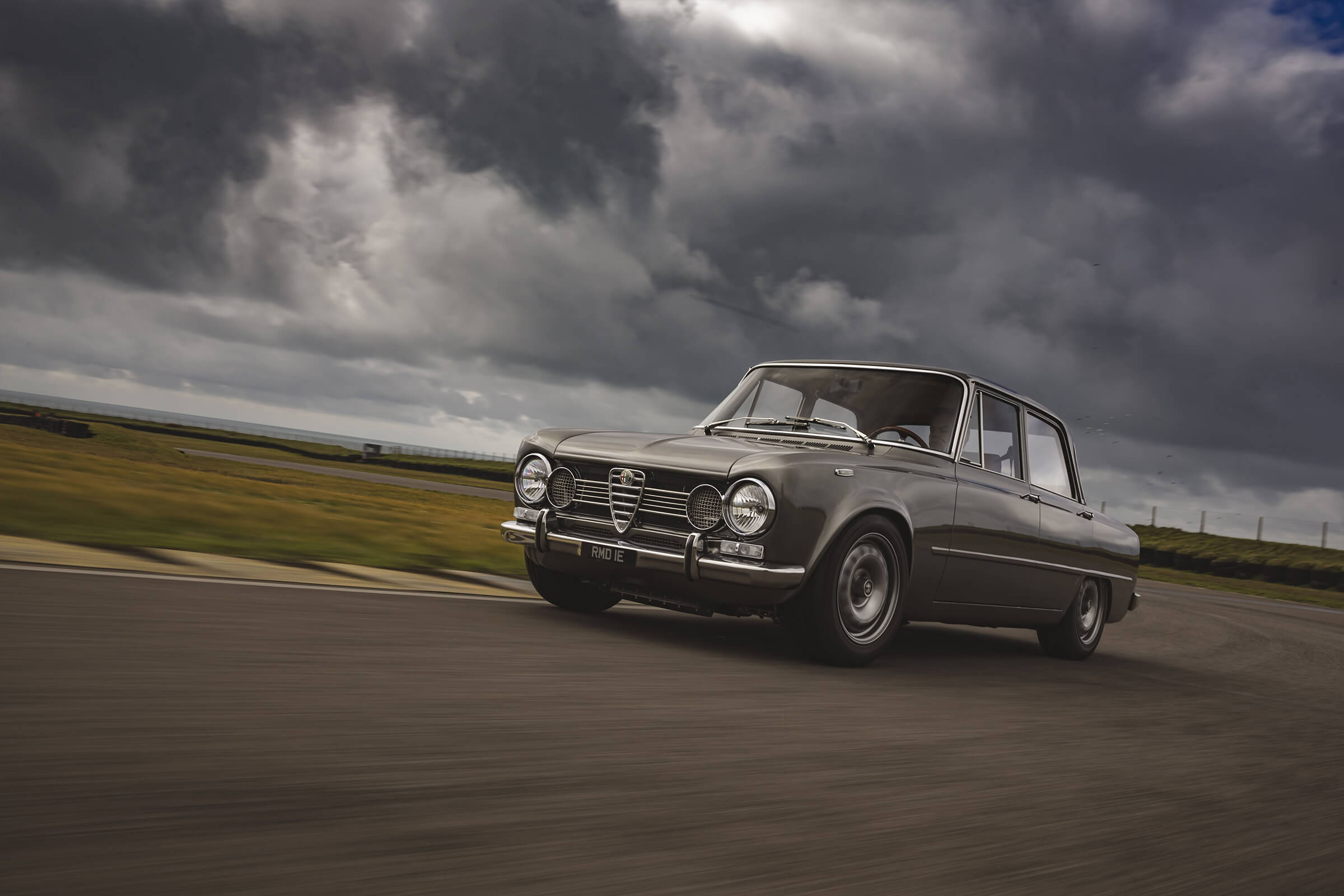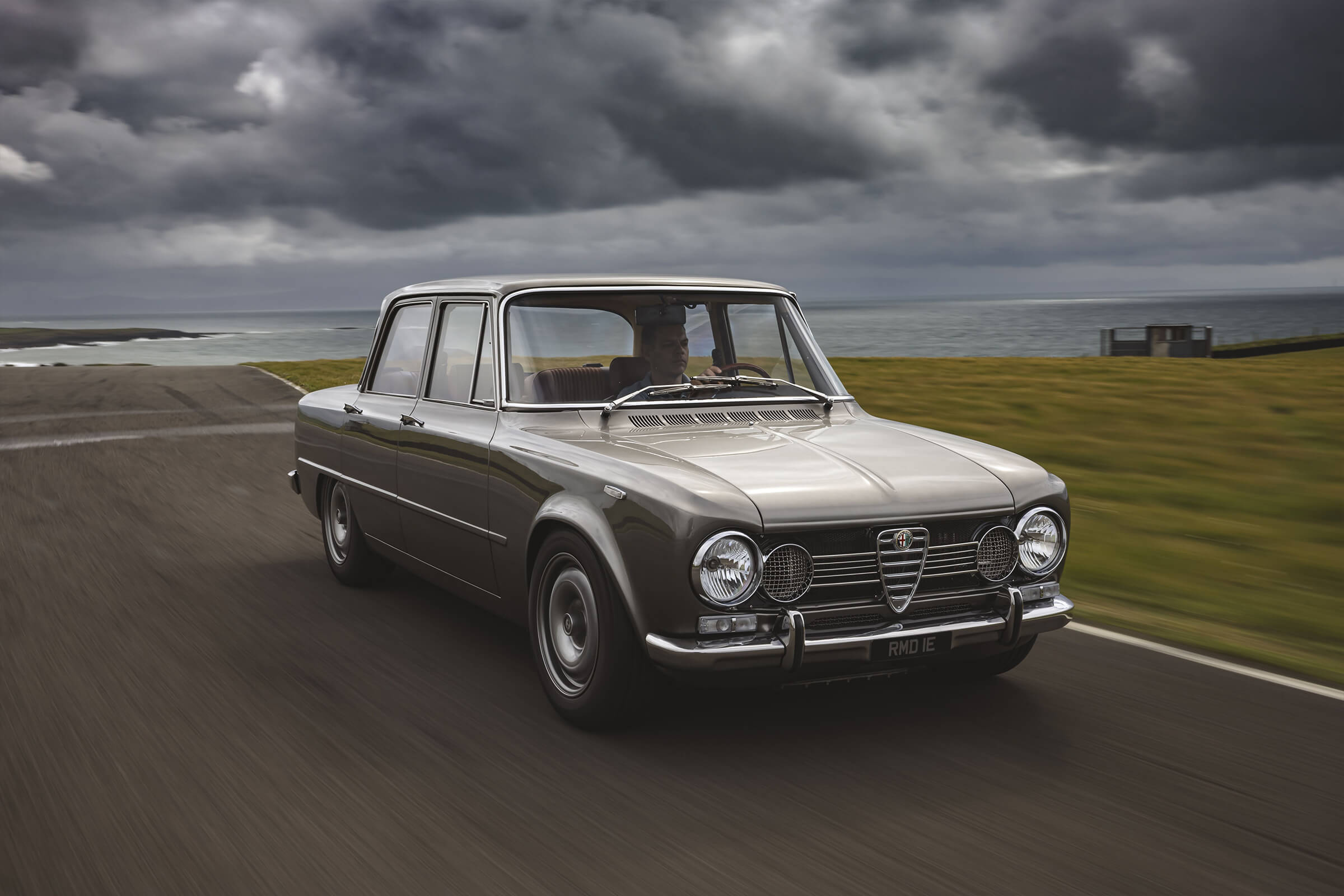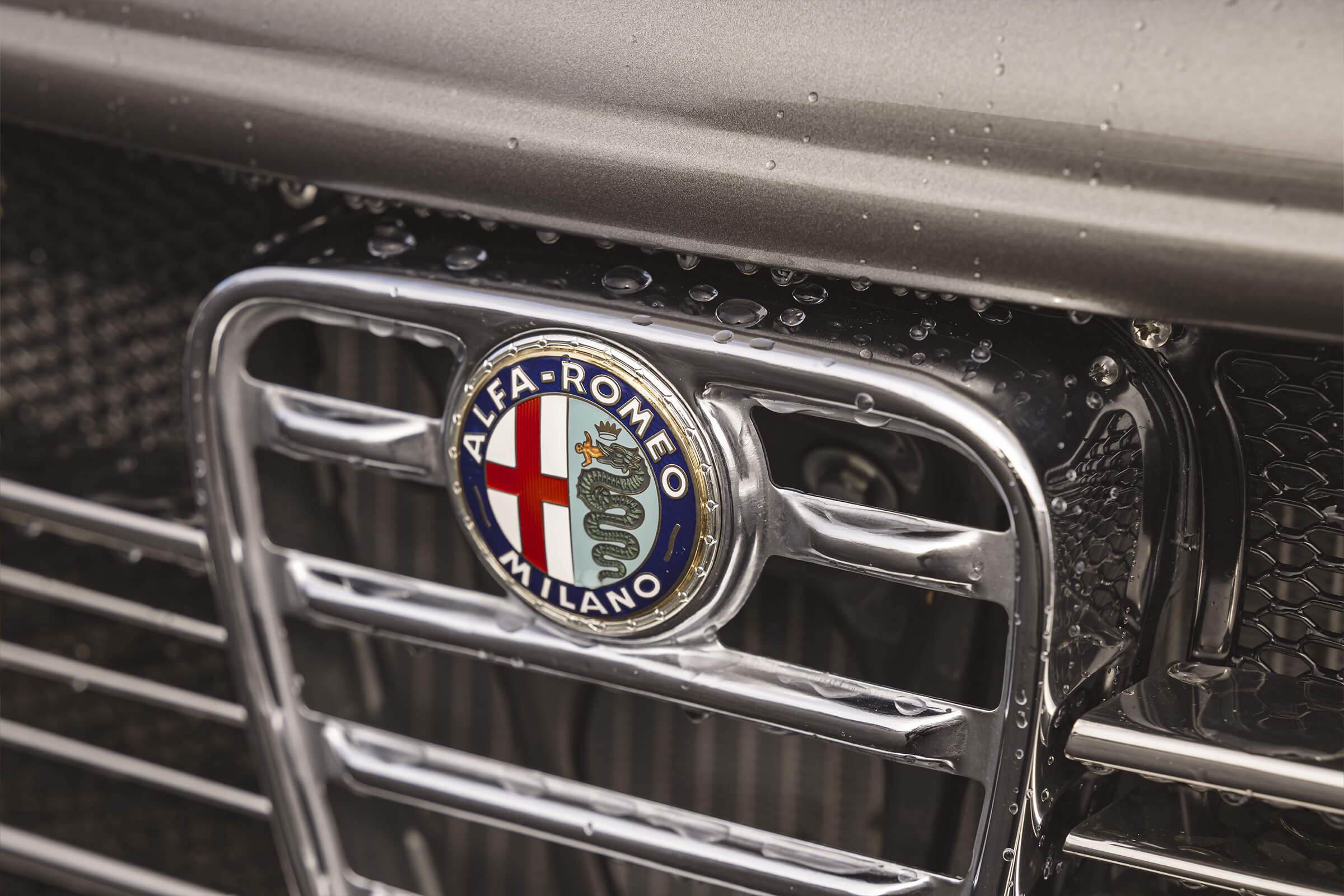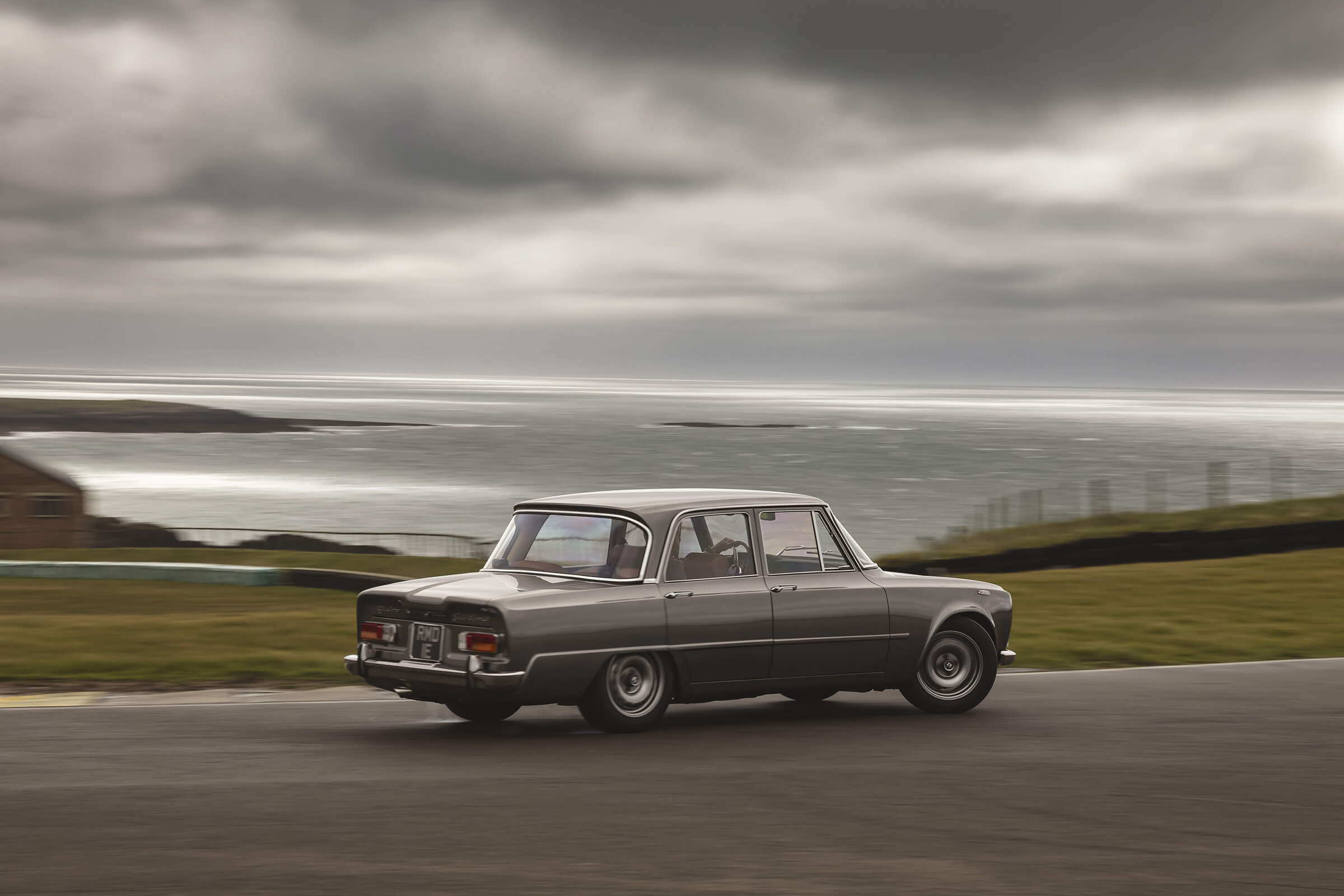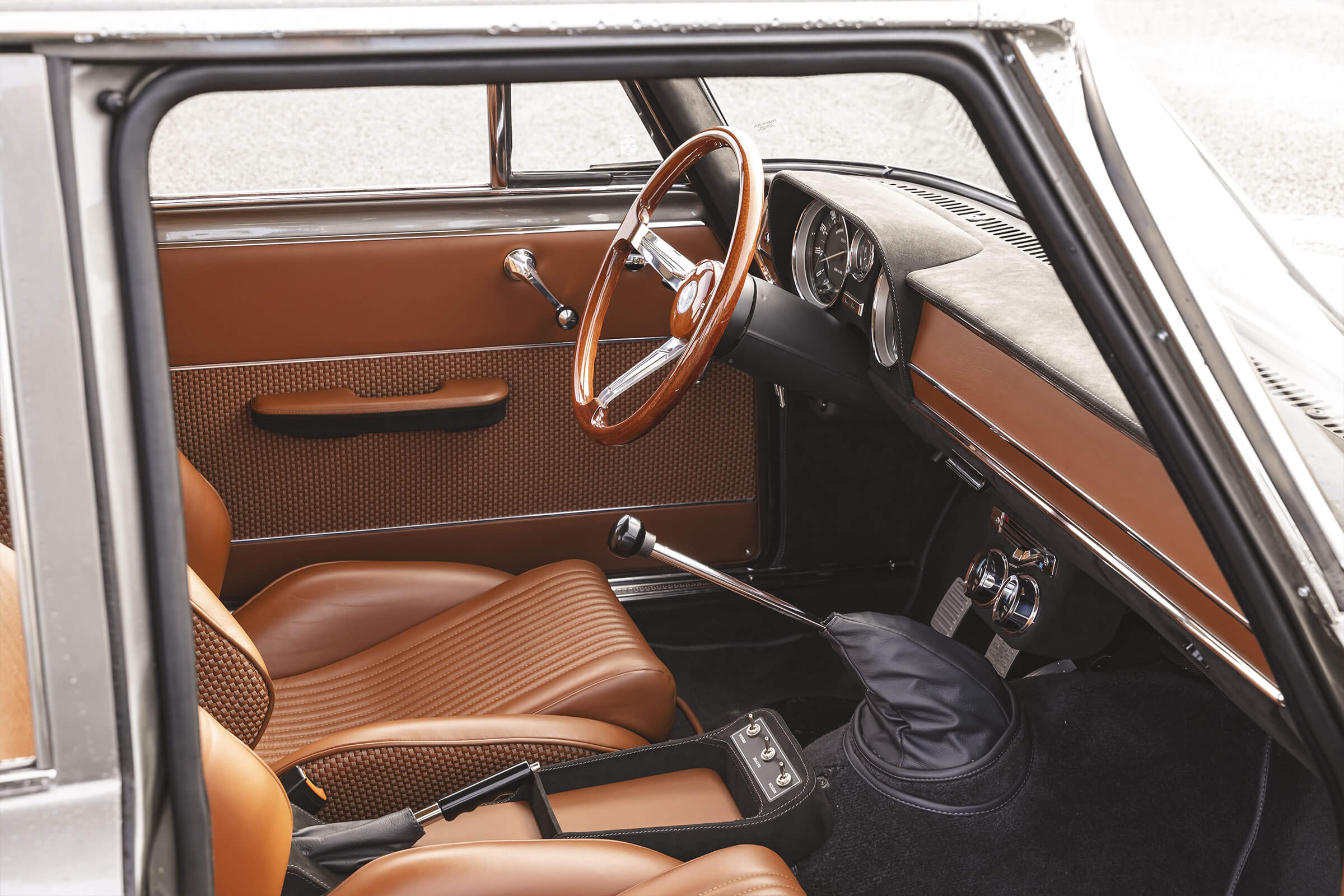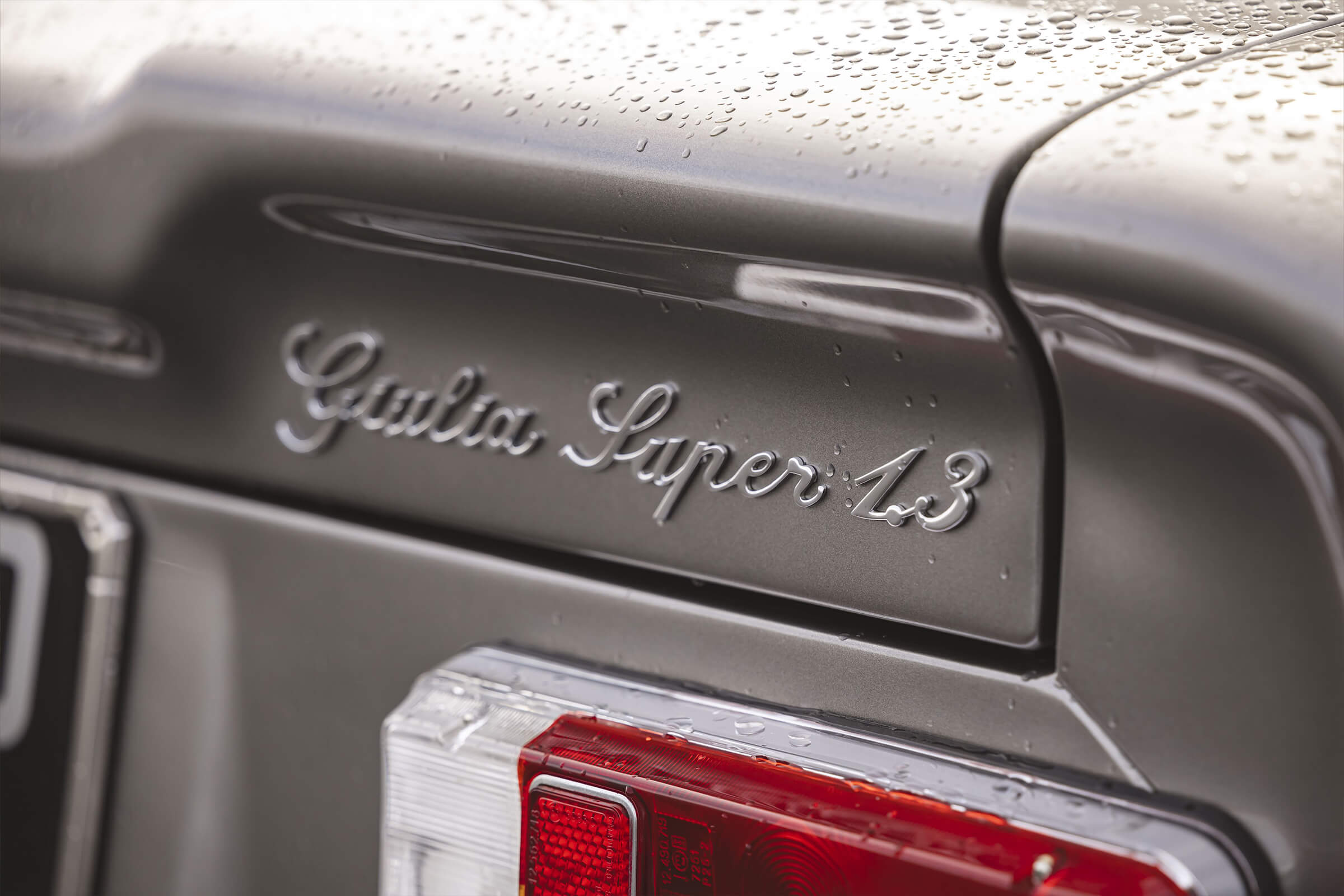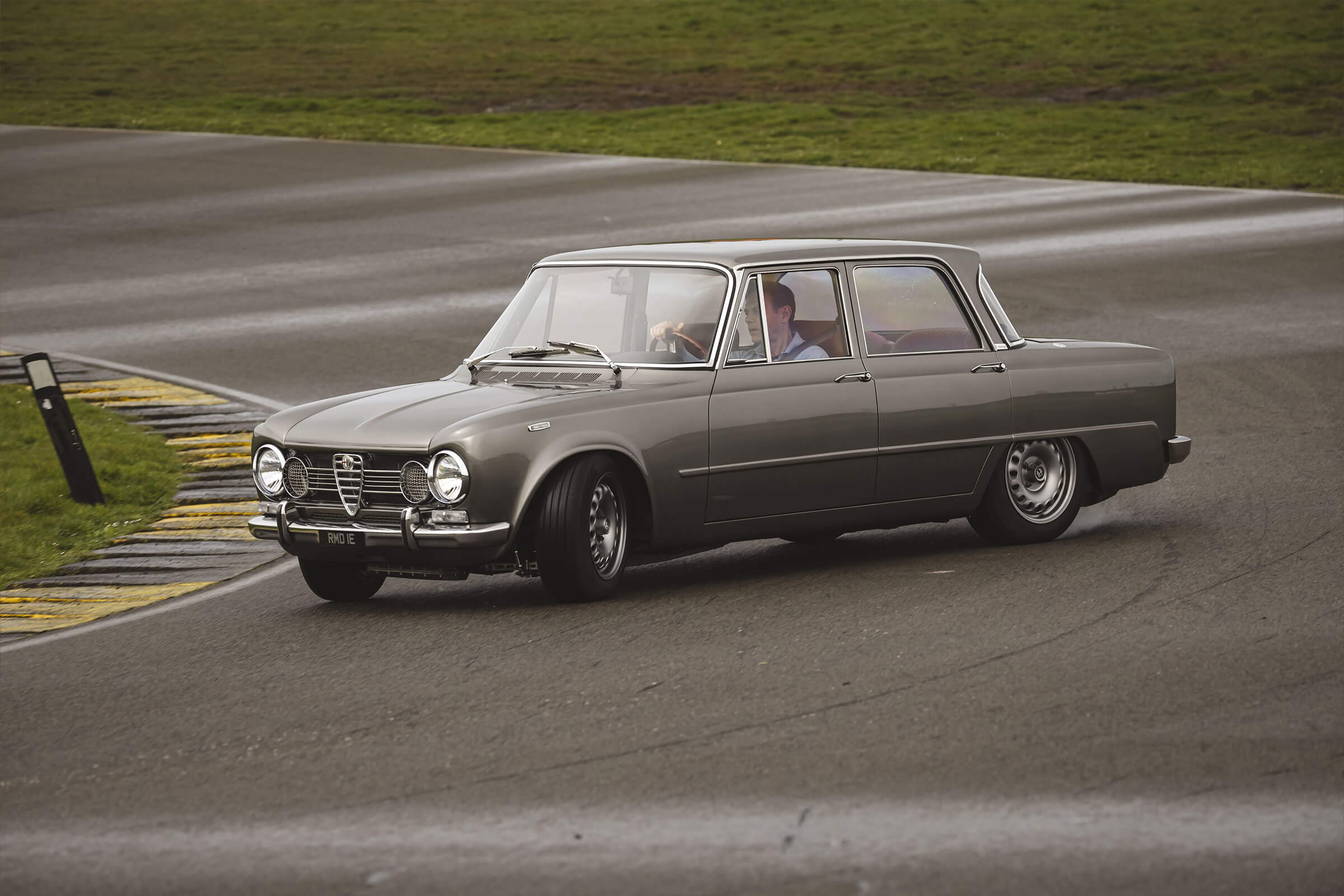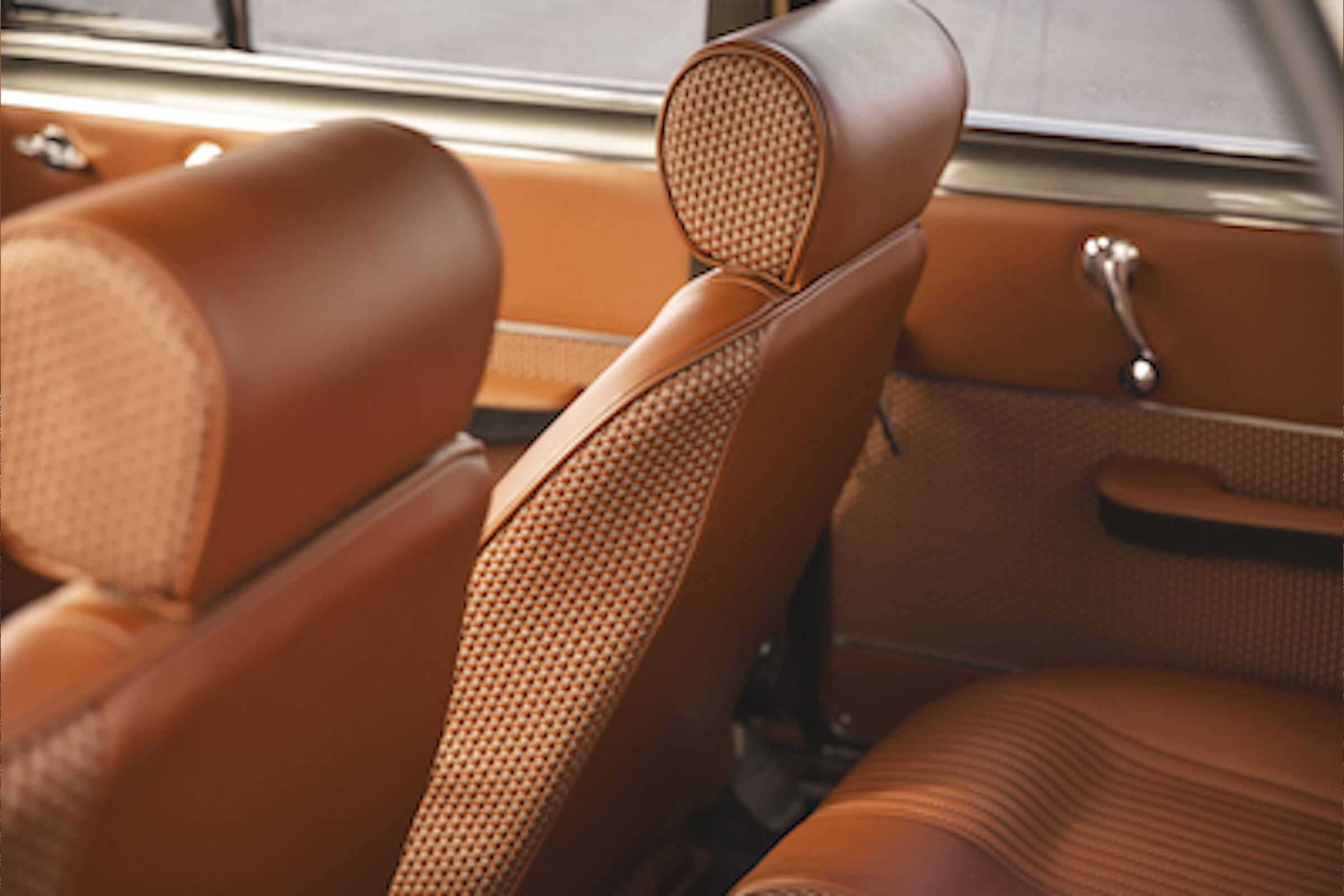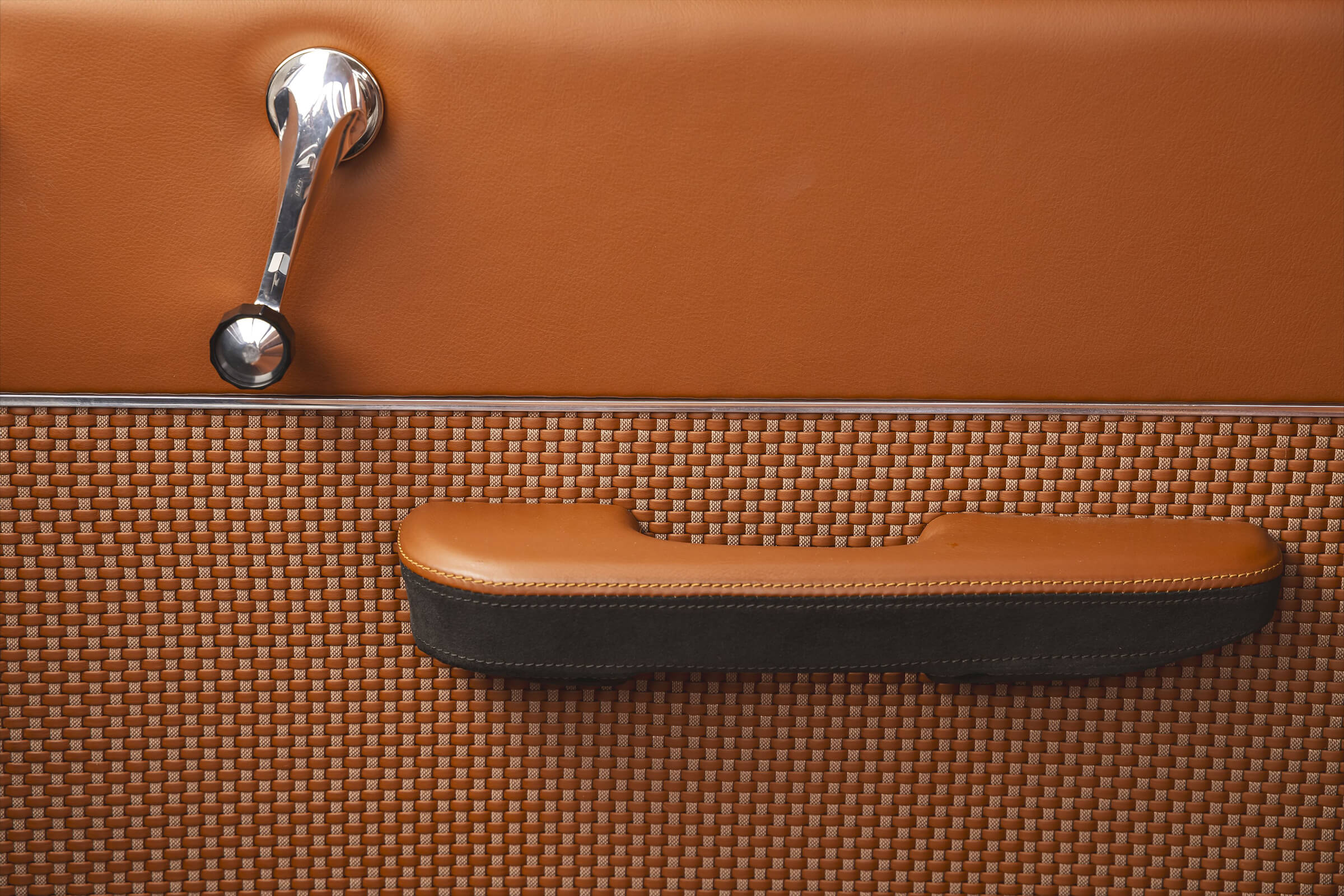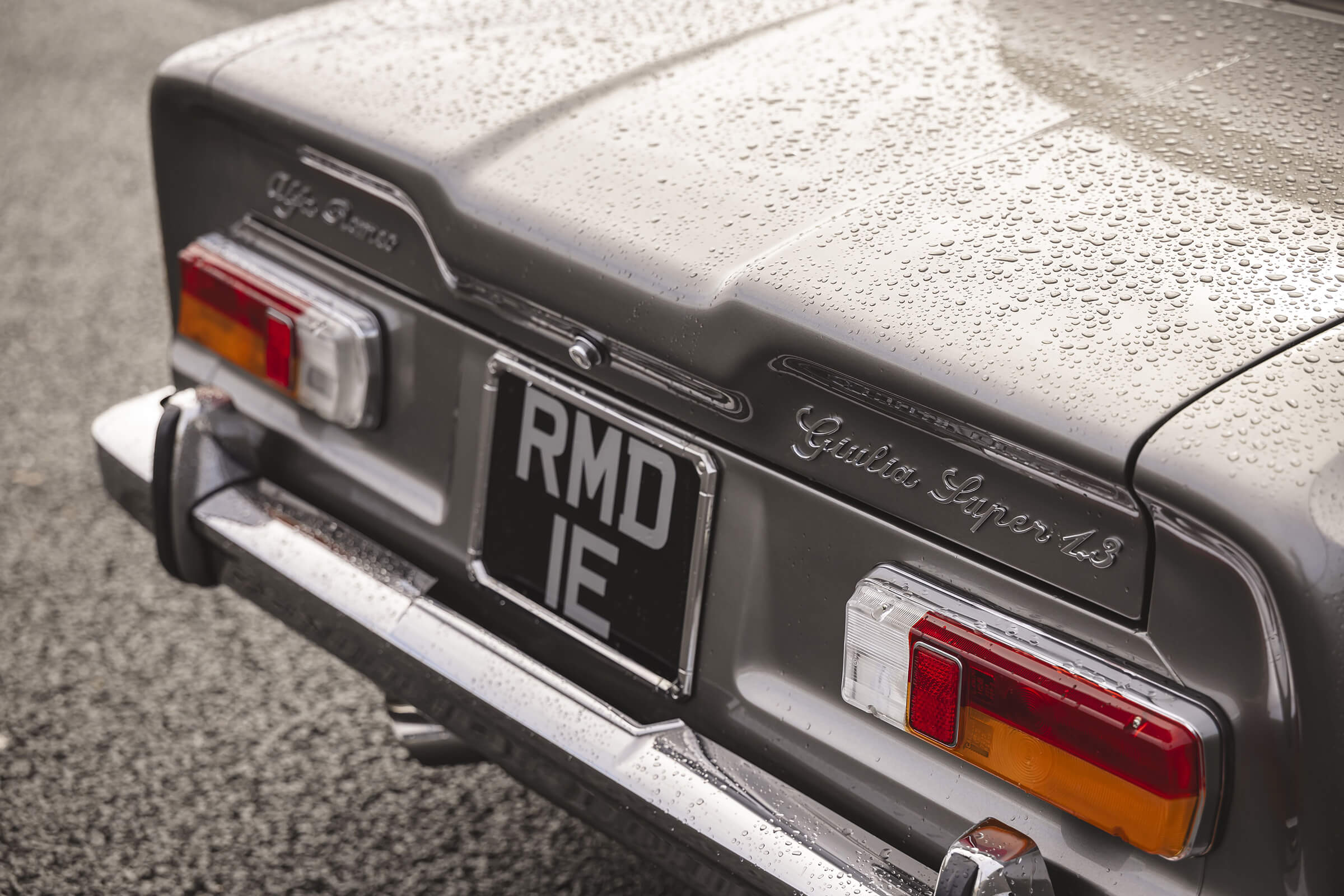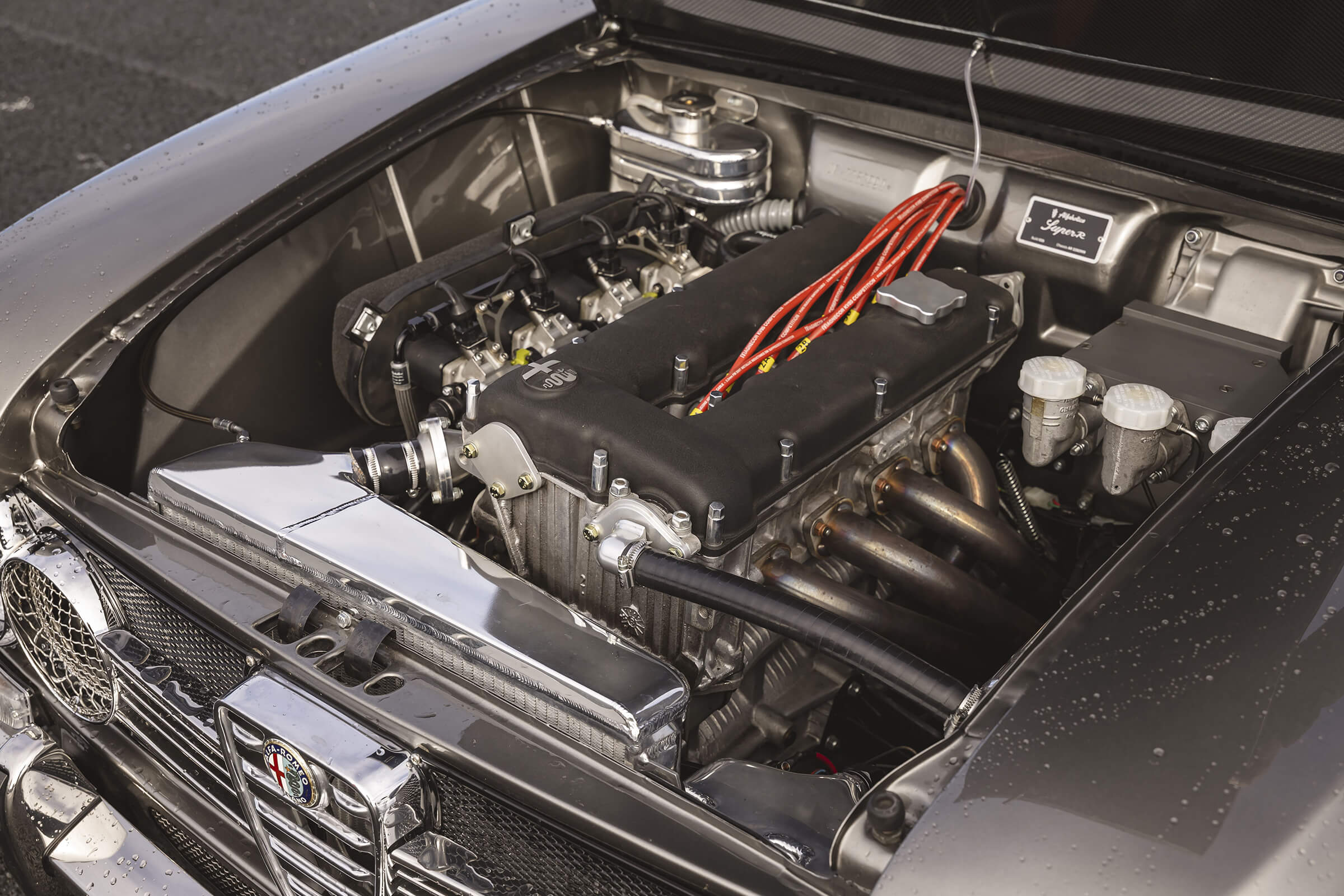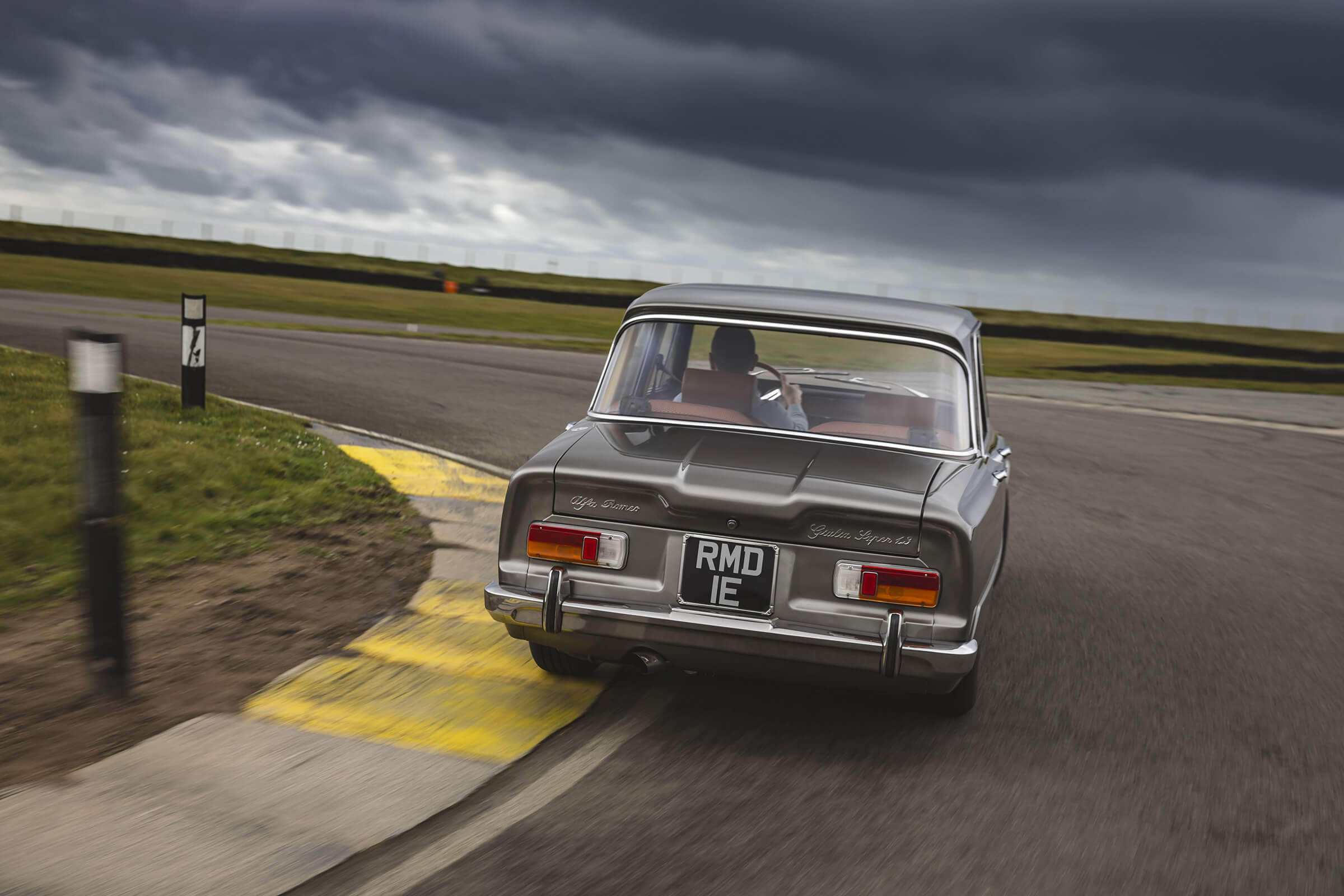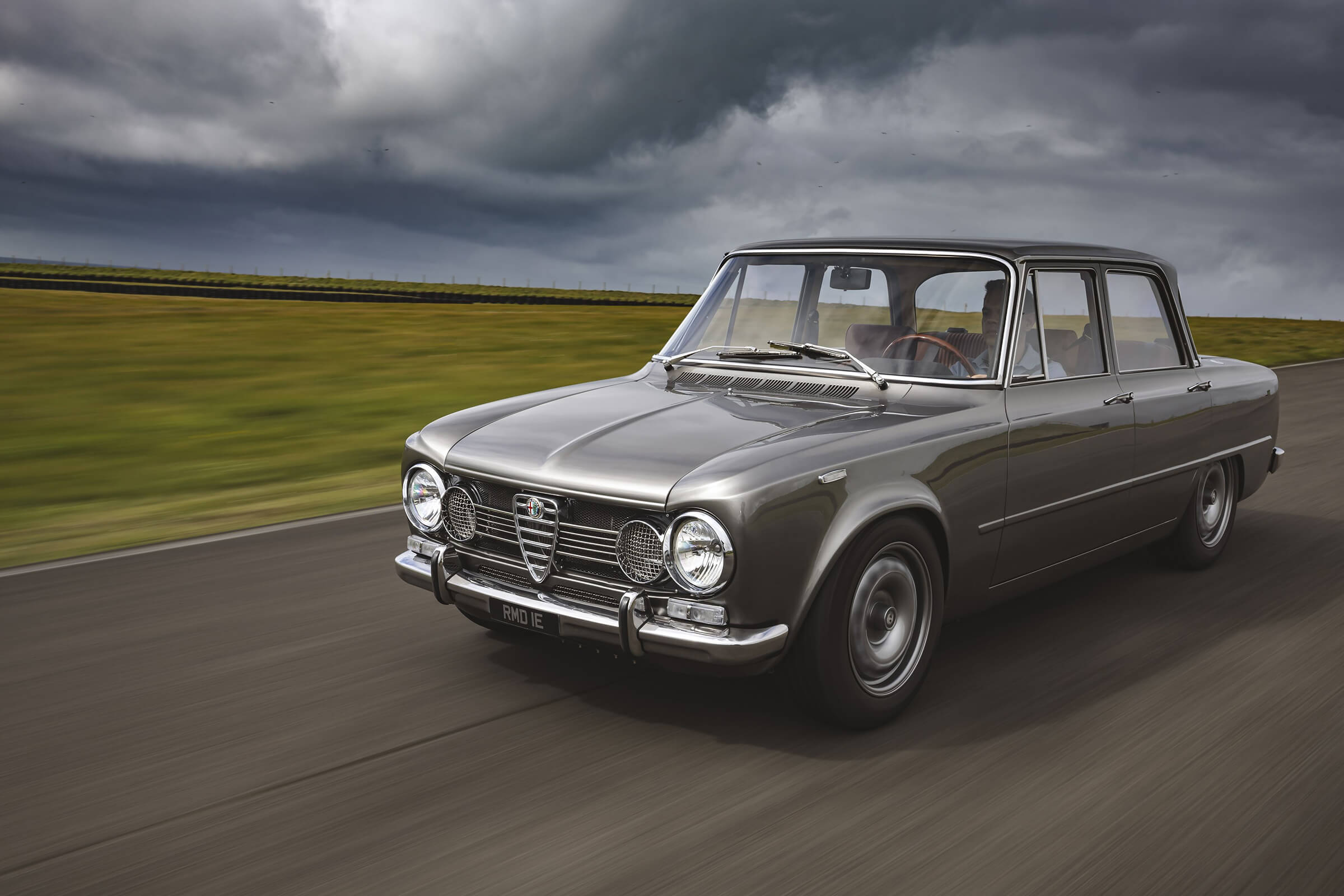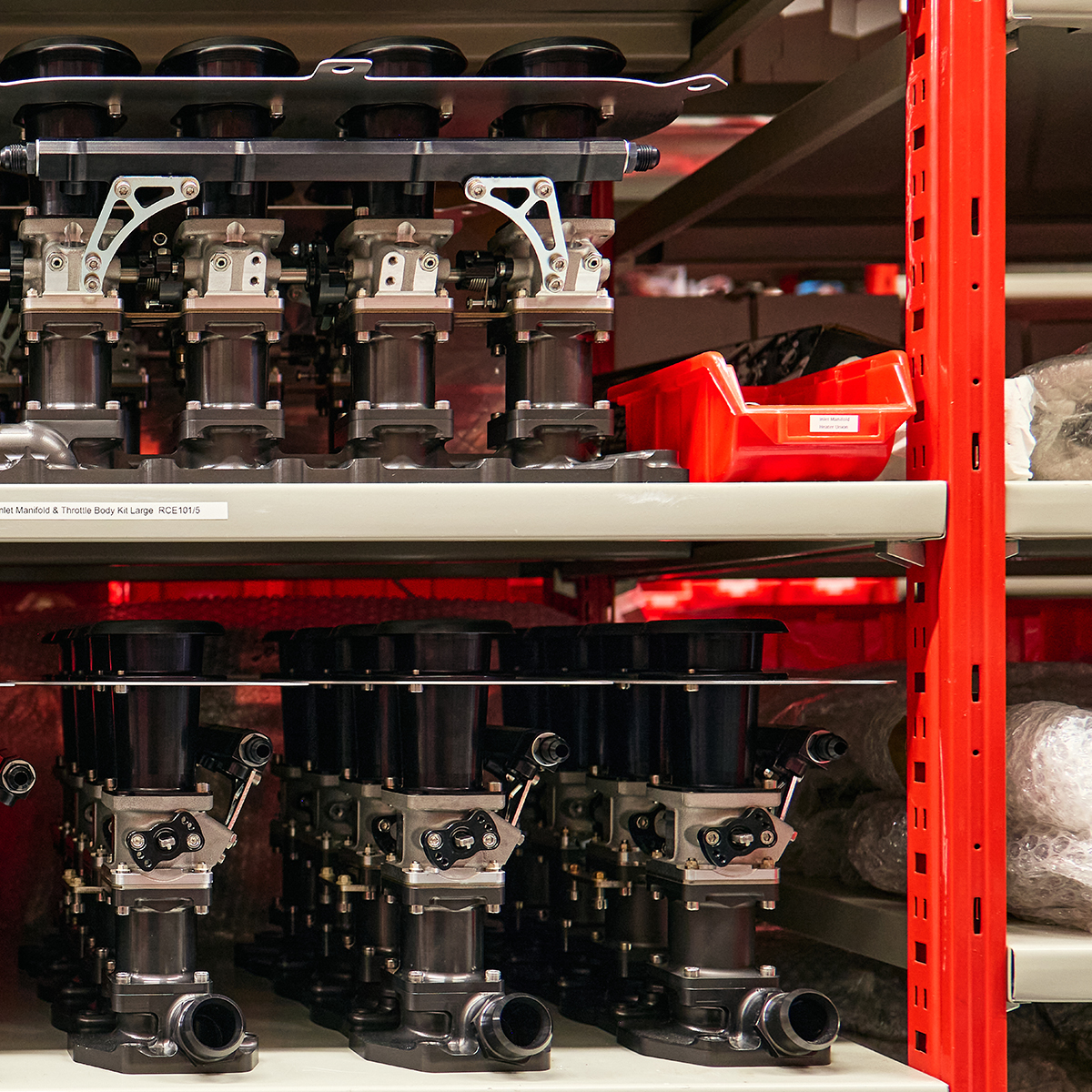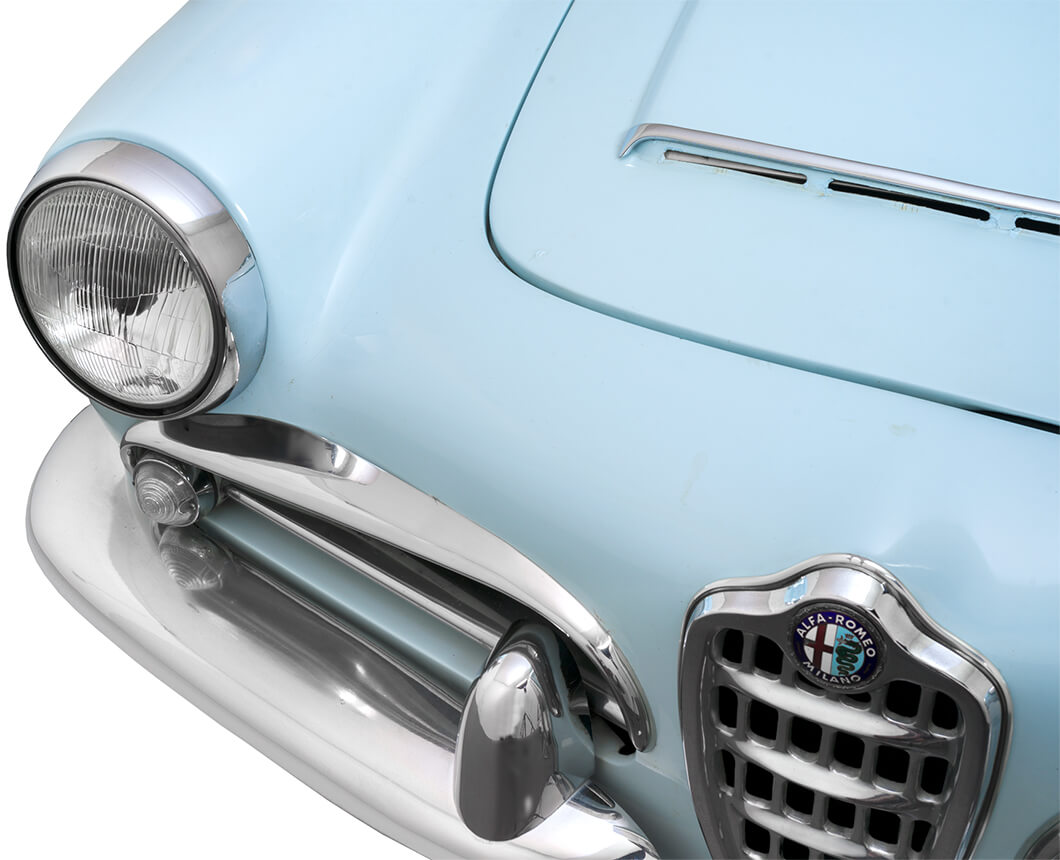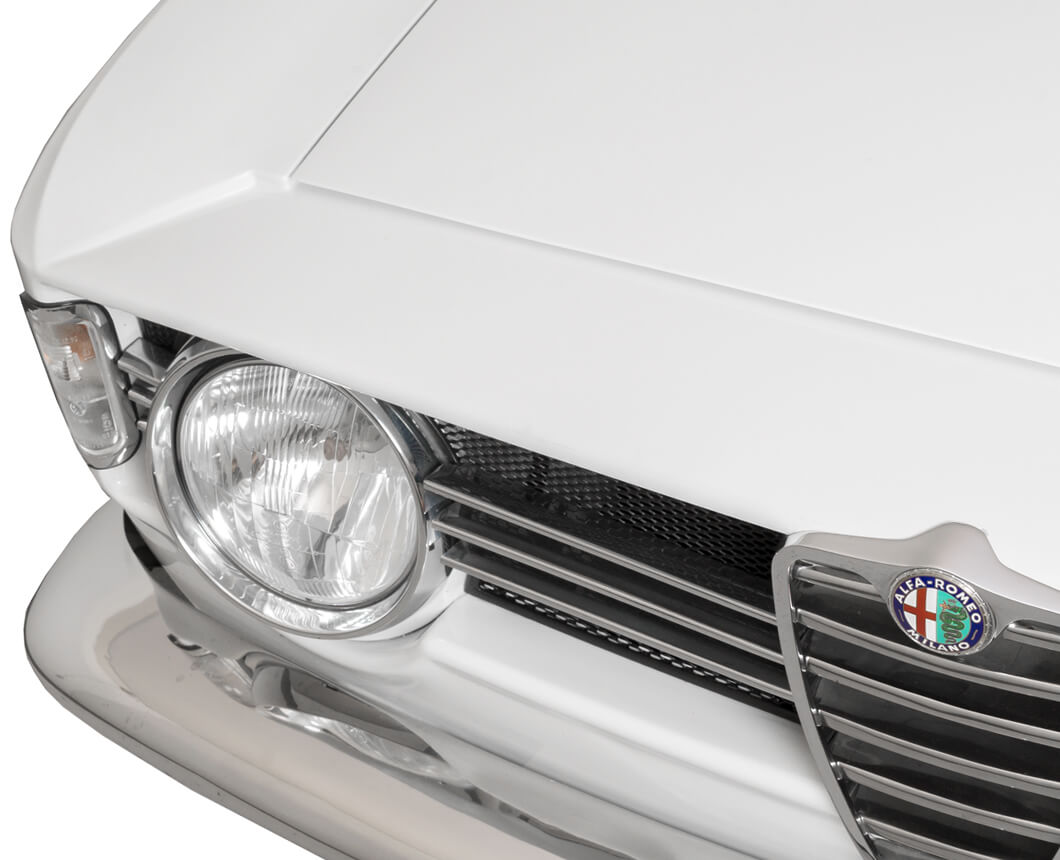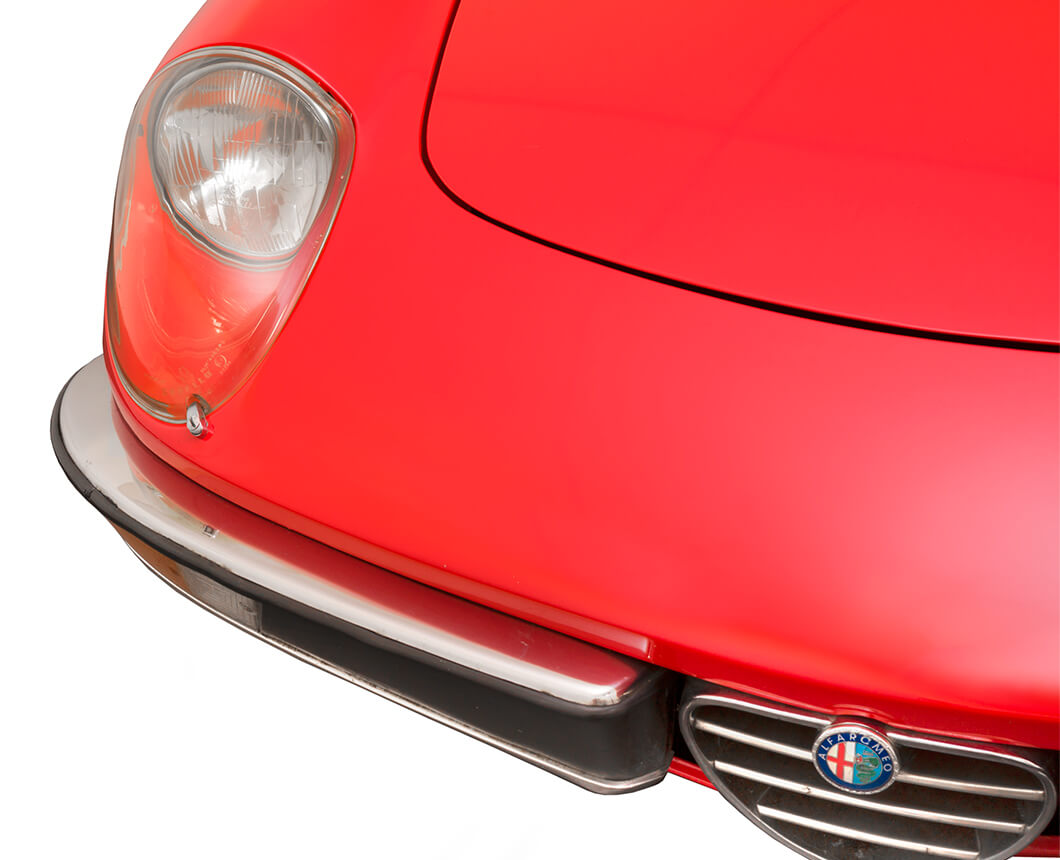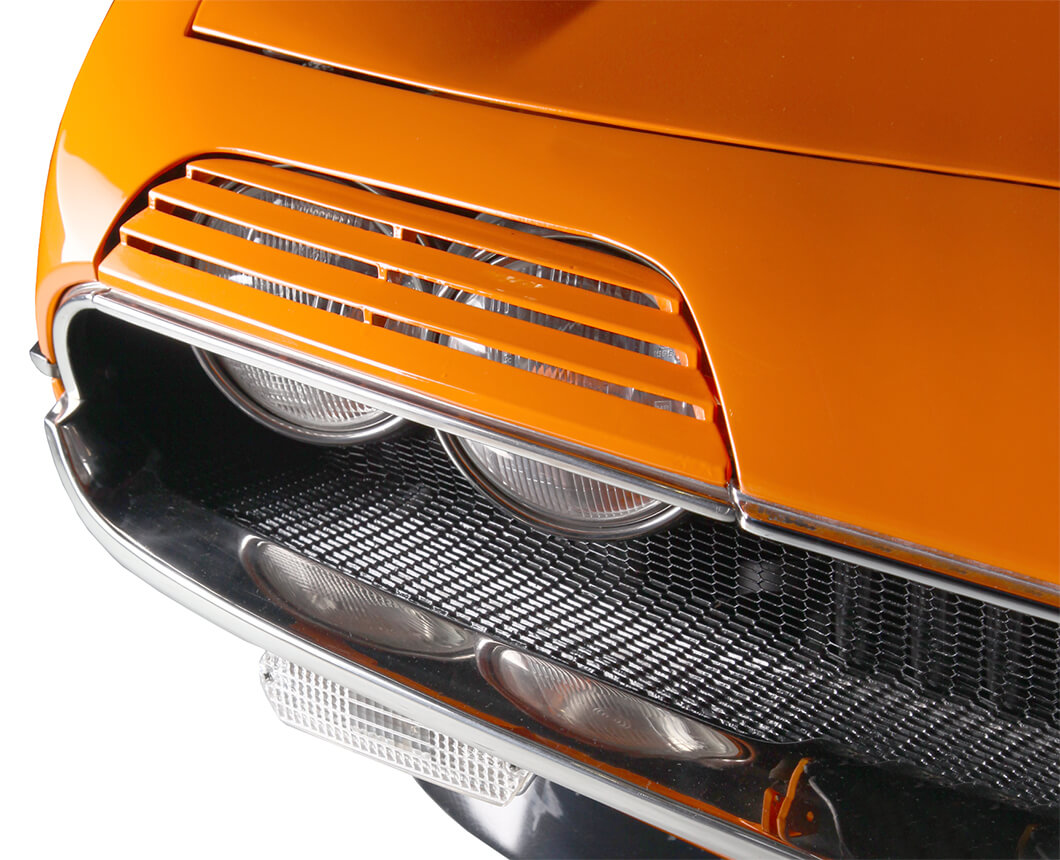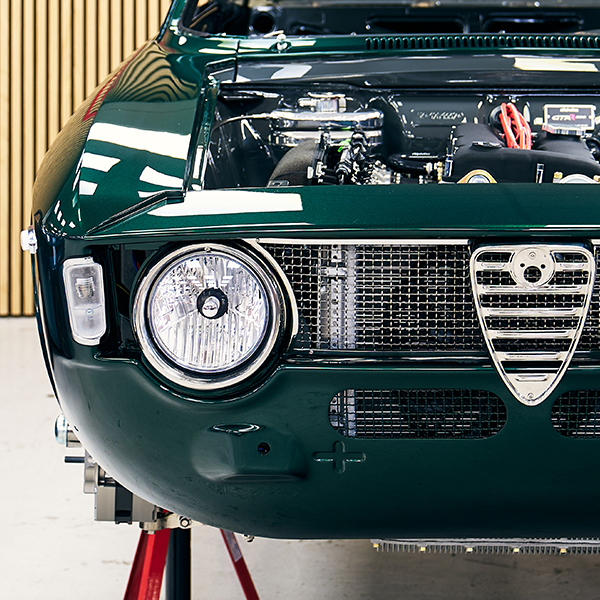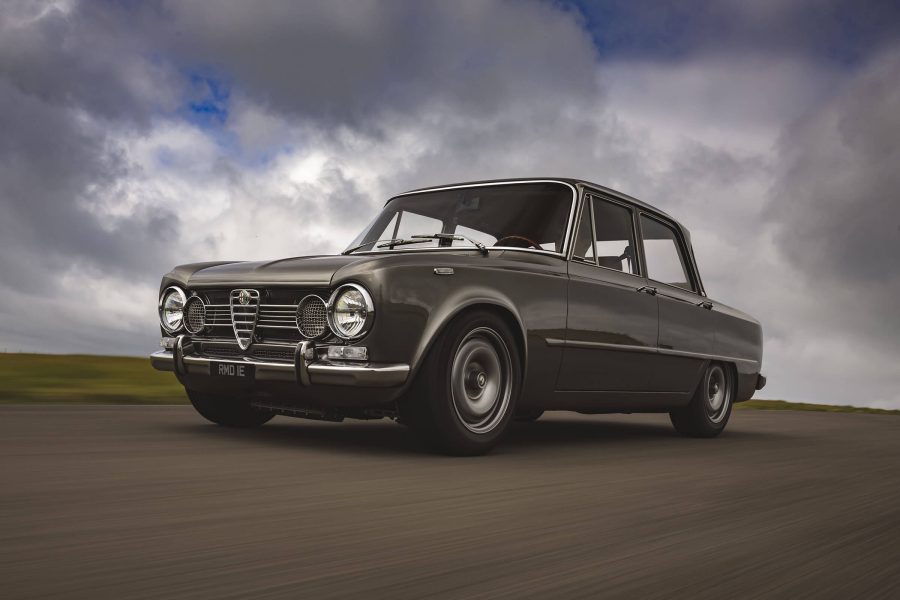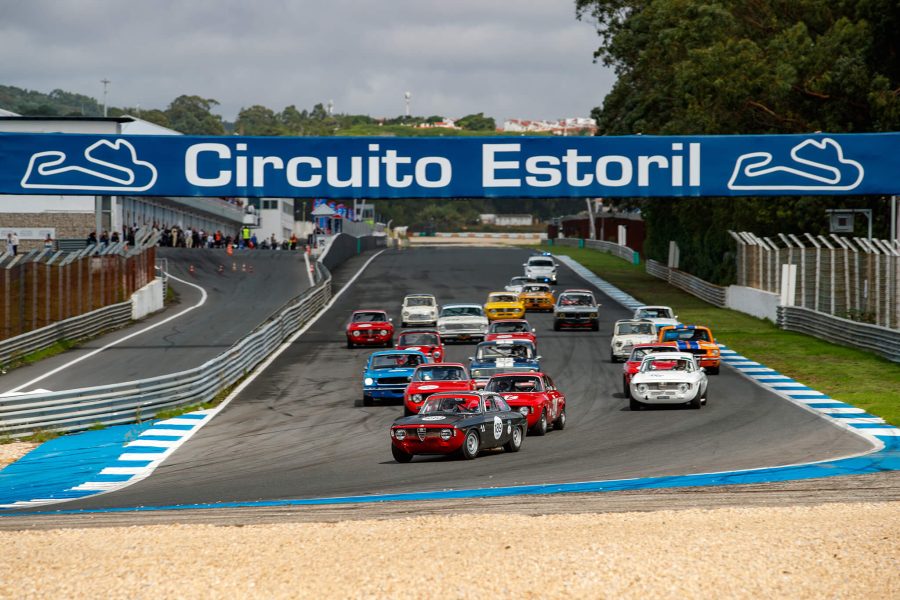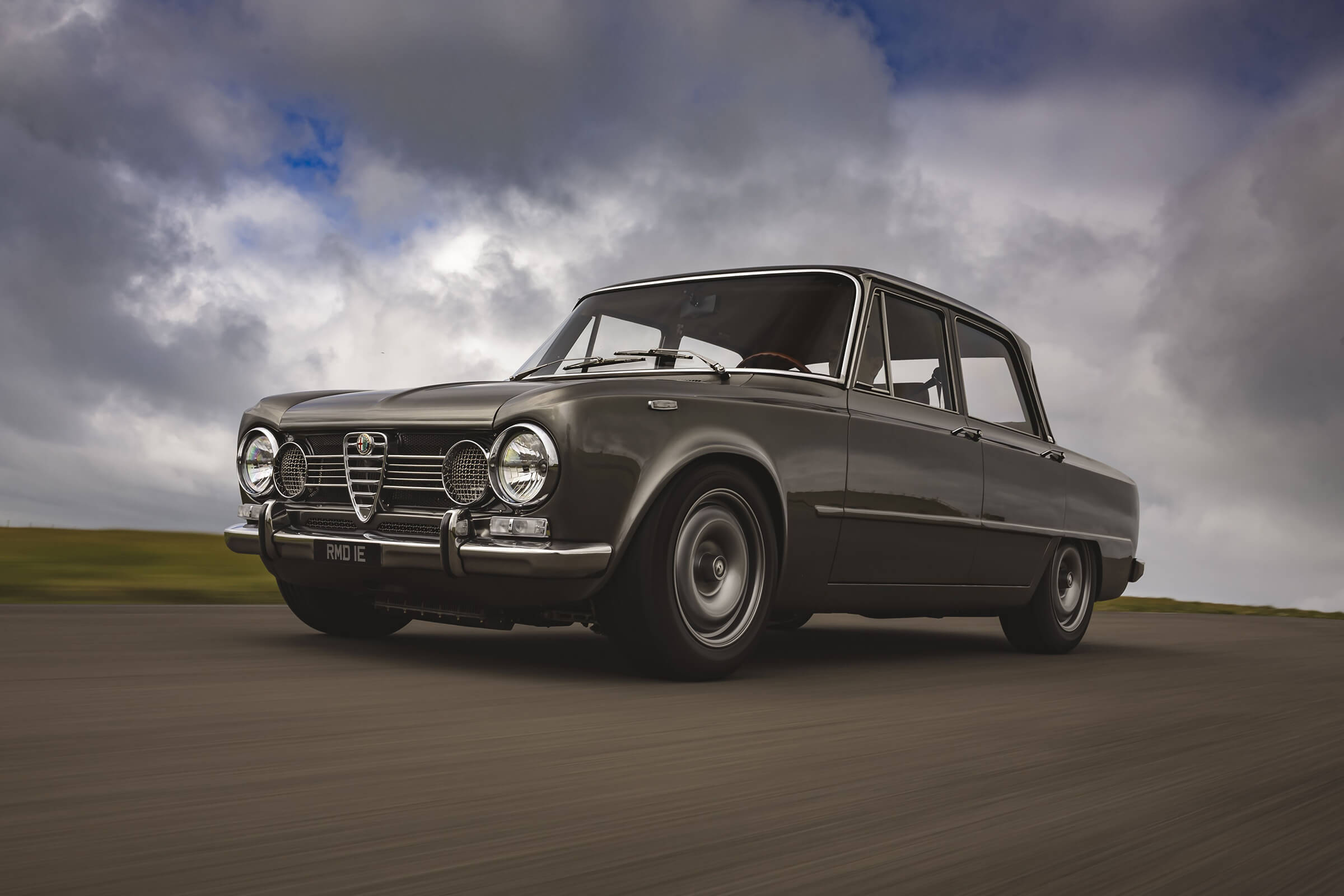
The Alfaholics Giulia Super-R 270 Is Half a Million Dollars of Perfection
What price do we put on the greatest interpretation of the foundational sports sedan, every part perfected and precisely balanced? With this question, we begin our series on modern restomods.
Road & Track
Words: Jethro Bovingdon
Photography: David Shepherd
Logic has no place here, so please attempt to swallow outrage or incredulity. For the world of the restomod ignores the rational, embraces the madness of true enthusiasm, and delivers pure fantasy. It deals in titanium, carbon fiber, and motorsport-spec engine management but also hand-formed aluminum panels, stunningly executed interiors crafted in the old ways, and hot-rodded engines—bored and stroked, balanced to perfection, and using high-lift cams and meticulously polished heads. Old and new in harmony. You don’t think that comes cheap, right?
Over the coming weeks, we’ll be probing the restomod scene and trying to separate the great from the good, the Instagram vaporware from the cars rendered by real hands in real workshops. And we’re starting with a Porsche. No, we’re not. That would be too obvious, surely? If any model could give you restomod fatigue, it’s the Porsche 911. Some set the standard for all others to be judged, others are teased and stretched in grotesque ways, but the ubiquity is overwhelming. So, let’s start with Alfa Romeo and a company that hasn’t just jumped on the restomod bandwagon. This is the Alfaholics Giulia Super-R 270. Without wishing to spoil the surprise, it’s also rather fantastic.
So, who are Alfaholics, and what is this creation? Perhaps the most important thing to realize about Alfaholics is that its heritage runs deep. Founder Richard Banks has been running Alfa Romeos in all sorts of racing series since the late Seventies, and around the same time, he turned to restoration and parts supply, particularly of the much-loved and now iconic 105-series Giulia. In 1999, he started Alfaholics, and the new company offered a full range of parts for Giulia models from 1963–78, with performance upgrades offered alongside the standard stuff. Racing has been a constant for Alfaholics too.
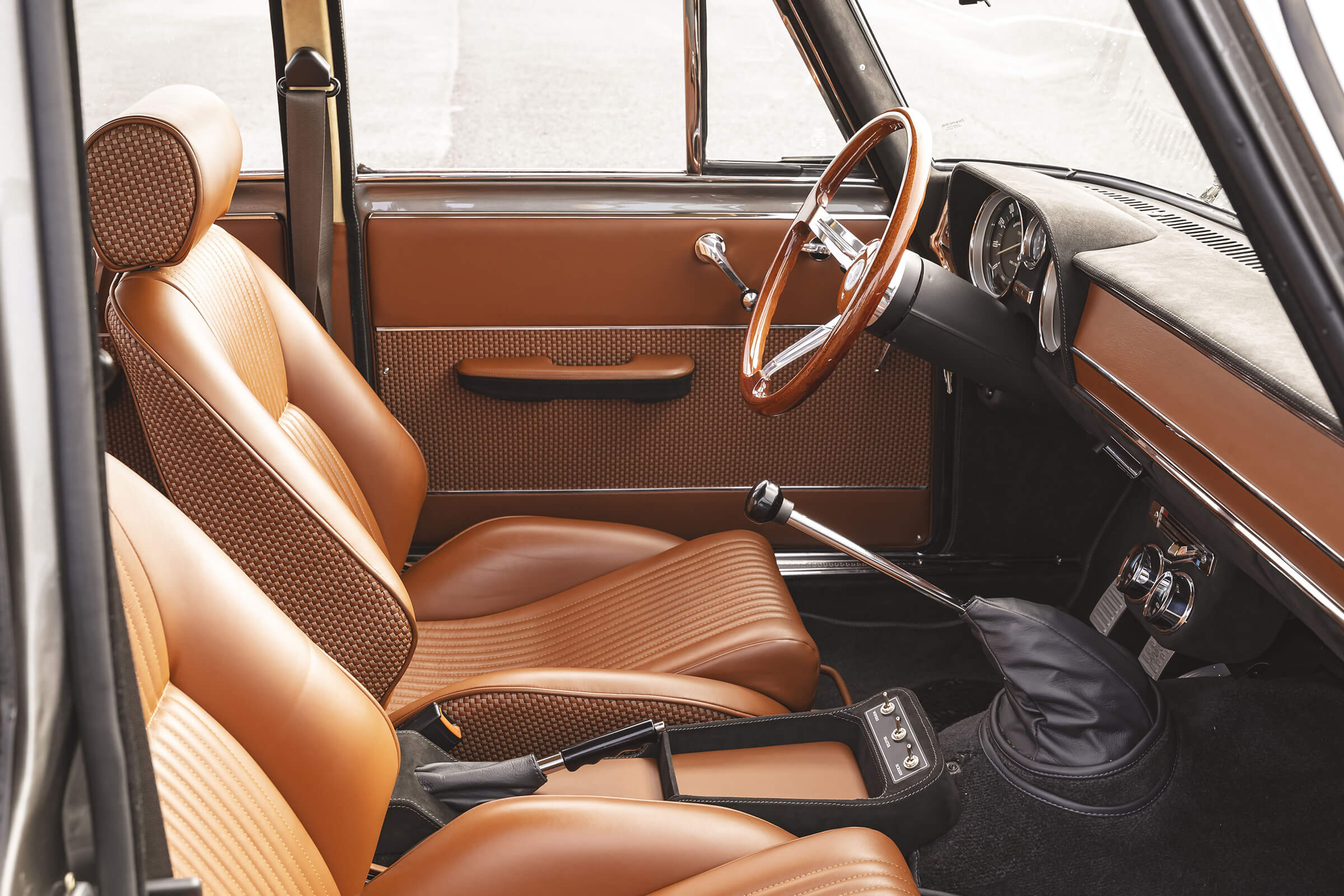
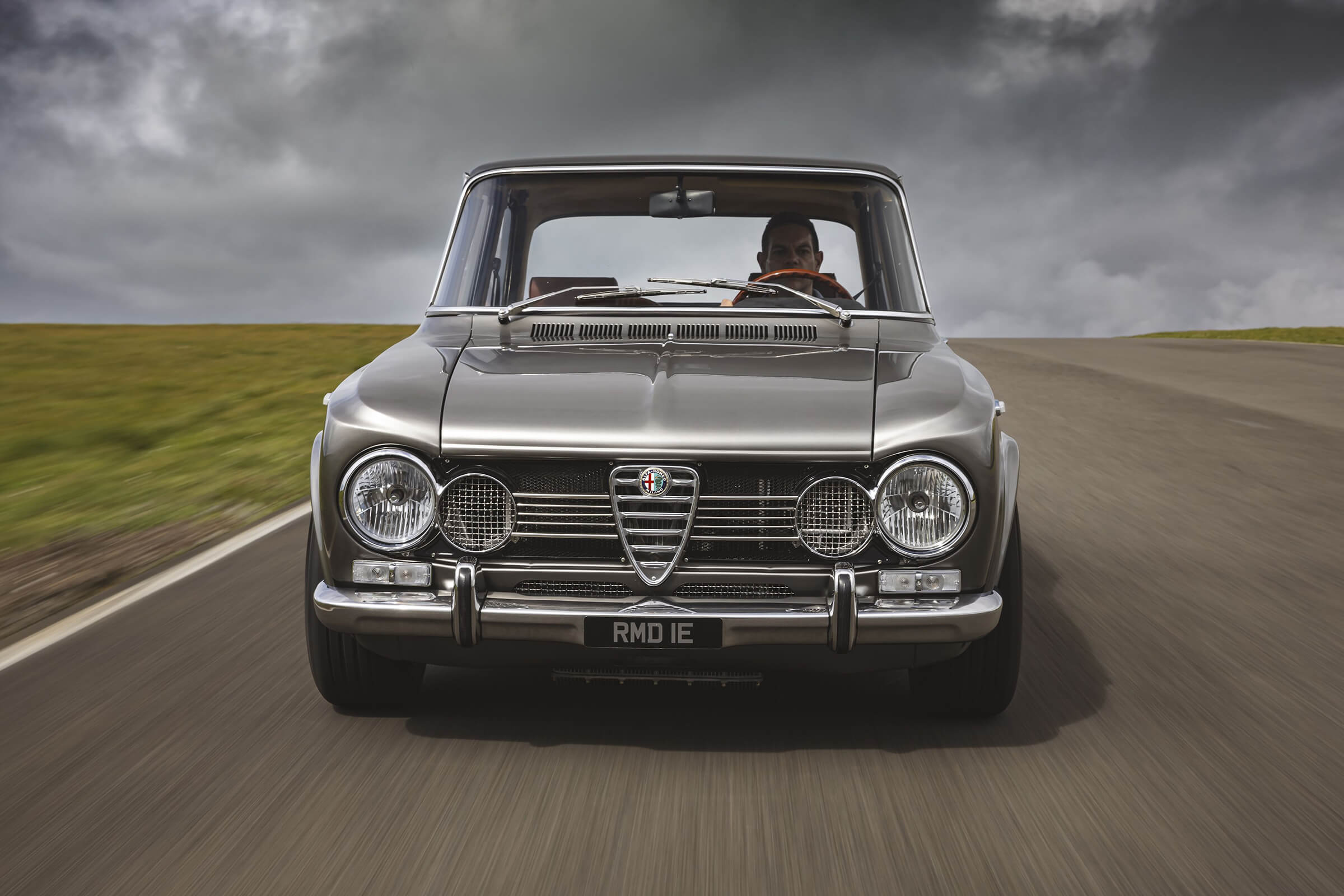
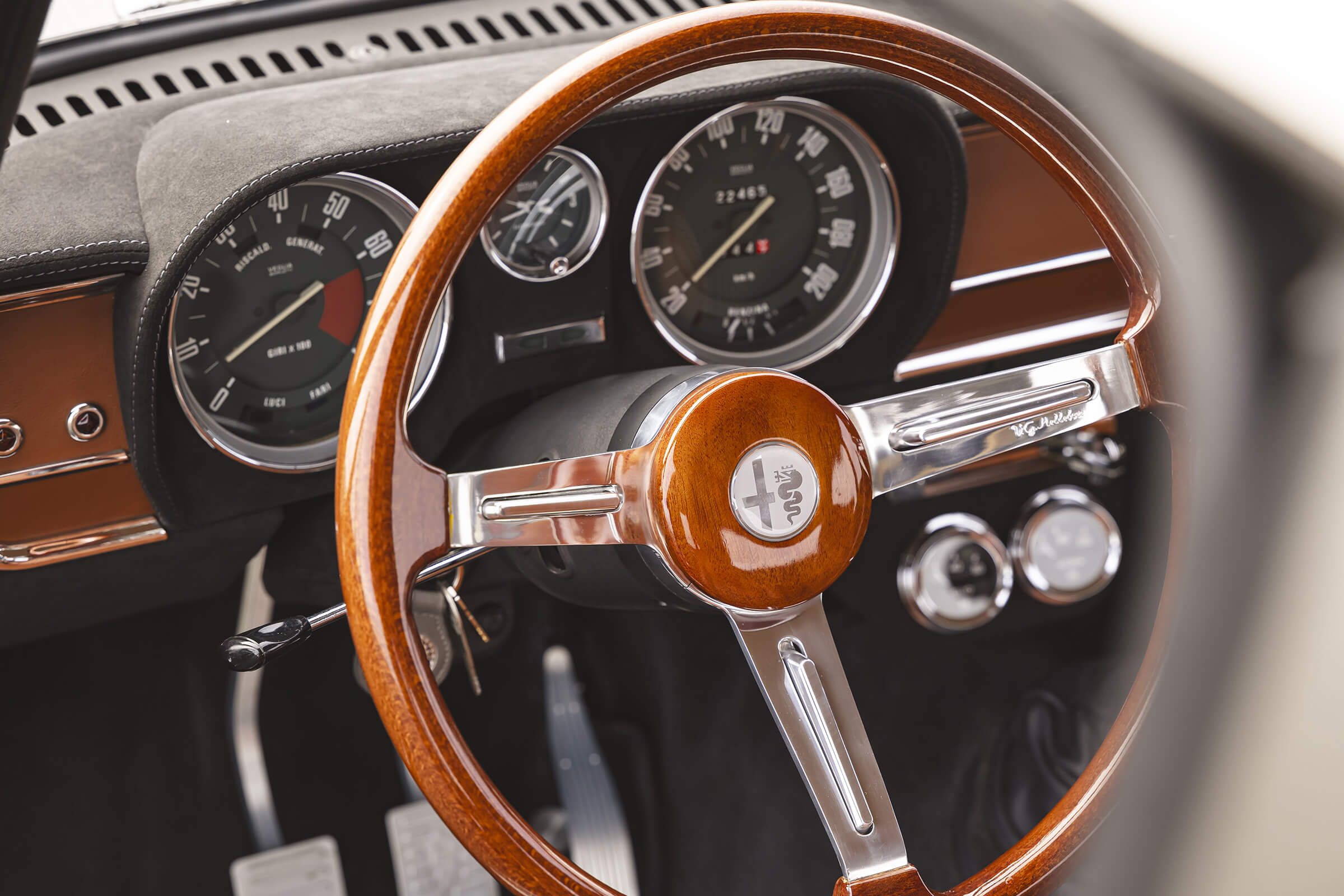
Alfaholics became a global business, focusing on parts and upgrades but including full restorations. When Richard’s sons, Max and Andrew, joined the business in 2004 and ’06, respectively, the purchase of a new building with a large workshop in Bristol, England, allowed Alfaholics to build the ultimate expression of a Giulia coupe: the carbon-fiber-bodied GTA-R 290. If Pagani and Dallara collaborated on a Seventies Alfa Romeo race car, it might end up looking a little like the GTA-R 290. The cost might be similar too. A GTA-R 290 comes in around $580,000.
This four-door Super Giulia–based model has the same 2.1-liter twin-cam engine with an aluminum block machined from billet. Producing 237 hp, it is mated to a GTA close-ratio gearbox with billet selector rods and forks, plus superfinished internals to reduce friction. The car also features Alfaholics’ own titanium axle tubes with a limited-slip differential, Ultraleggera adjustable titanium suspension, and a whole lot more. It’s a kind of a GTA-R for the family man, and as such, it has a similarly heavyweight price. The car itself is a lightweight though. The Super-R tips the scales at 1958 pounds. In the pit road of the picturesque Anglesey Circuit in Wales, with the Irish Sea roiling below the horizon, it looks tiny and utterly gorgeous. Walk around it, and quality oozes from every detail, but there’s also a clear sense of purpose. Treading the line between race car and automotive art is tricky, but the Super-R nails it.
So much so that while I greatly enjoy looking at the Super-R, it feels entirely appropriate to drive out of pit road and onto the circuit. The car’s stance, the barely hidden oil coolers, the way the inner headlights are now mesh-covered intakes, the noise and sensations provided by the highly tuned engine, and the whole vibe almost implore you to drive the thing on its door handles. So, that’s what I’m going to do. Automotive art has its place, but it must be kinetic too. For this price, the Super-R needs to deliver a truly mind-blowing driving experience.
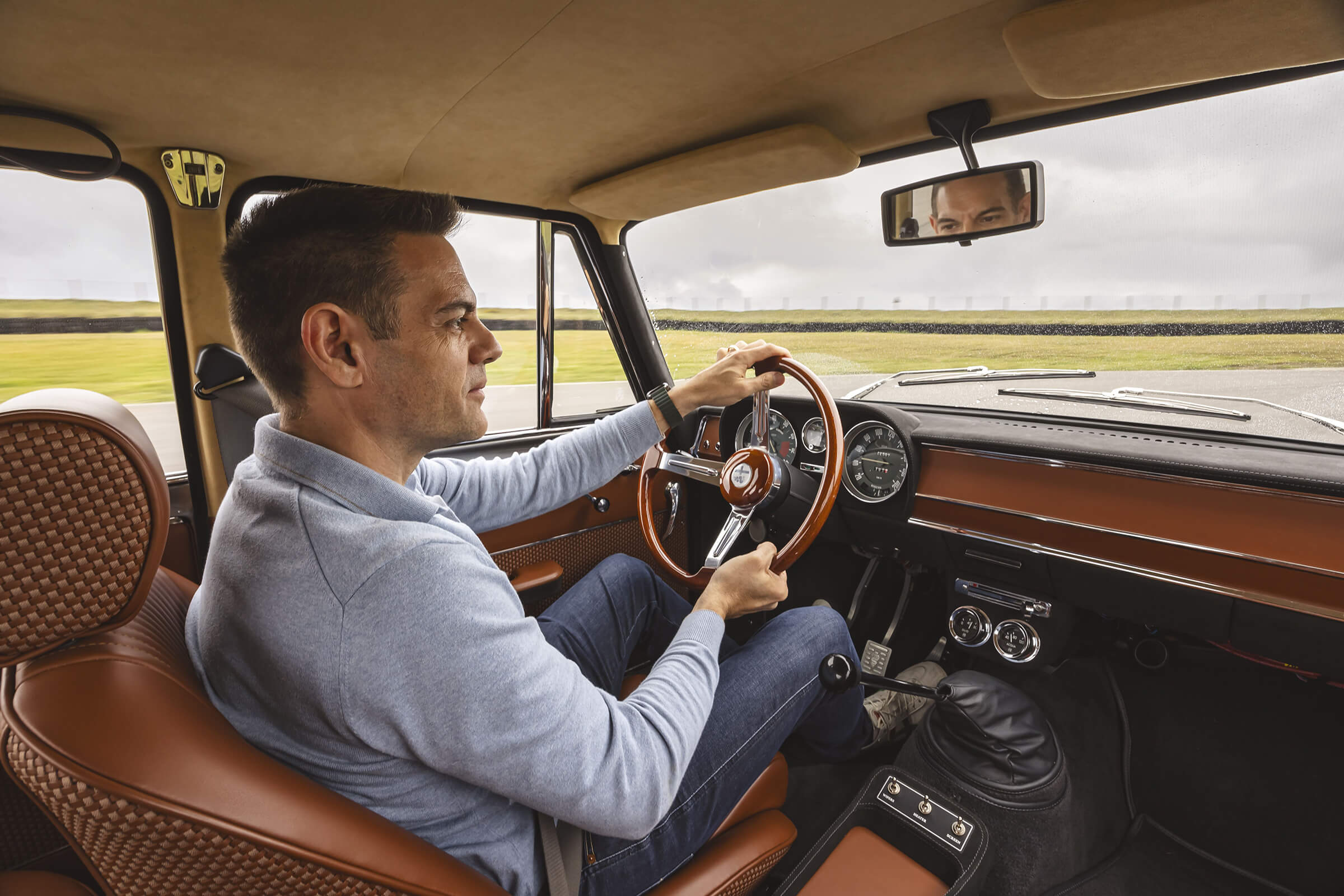
It takes less than a lap to realize that the deep-seated quality of the Super-R extends right into the car’s dynamic makeup. The long, crooked wand of a gear selector looks archaic, but the aforementioned gearbox, a five-speed, with its exotic internals is fantastic. The throw is so precise, and you feel like you can rattle through ratios with lightning speed but no need for brutal aggression. You’ll want to hang on to each ratio, because the barking intake roar of the 2.1-liter engine is outrageously addictive, and 237 hp in under 2000 pounds makes for startling performance. The “270” is for 270 bhp per ton, which beats a BMW M2 and isn’t far shy of a 718 Cayman GT4. In such a tiny, narrow car with a big wooden-rimmed steering wheel (this car retains the factory standard item), the acceleration really is a shock.
Yet it’s very clear that the approach for the Super-R isn’t to take an old car and superimpose modern performance over the top of it. Instead, Alfaholics has enhanced and purified the Giulia’s core qualities. Moving the performance curve while simultaneously intensifying the feedback, sensations, and pure joy of the original car is the real trick here. Fitting the Super-R with 185/65R-15 Michelin Primacy tires speaks volumes about Alfaholics’ approach. It is a car about handling, not grip. On a cold, patchily damp track, the Super-R is absolutely in its element.
The steering, which at first feels heavy and a little cumbersome to hands used to modern ePAS systems, is the key here. There is so much information humming through the large-diameter rim. Through one particular fast right-hander marked by little rivulets of water, the weight and response shift with the grip available. It’s easy to dance the Super-R even deep into fourth gear. In a modern supercar with masses of mechanical grip, this would be a nightmare—the tires violently snatching between grip and slip—but the Alfa brushes it off. Little flares of revs indicate wheelspin, but the car is so light on its toes that you can stay committed on the throttle with no fear.
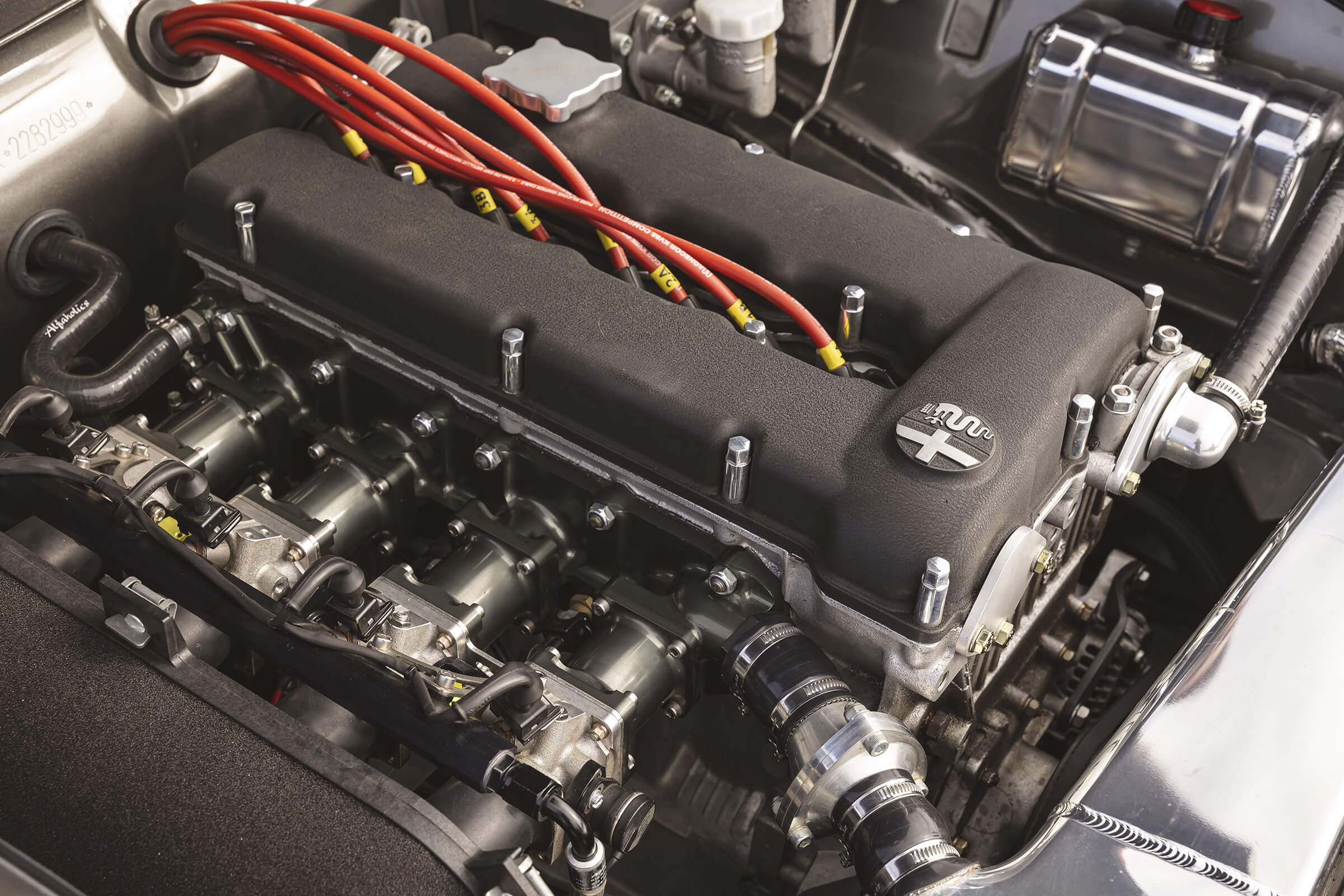
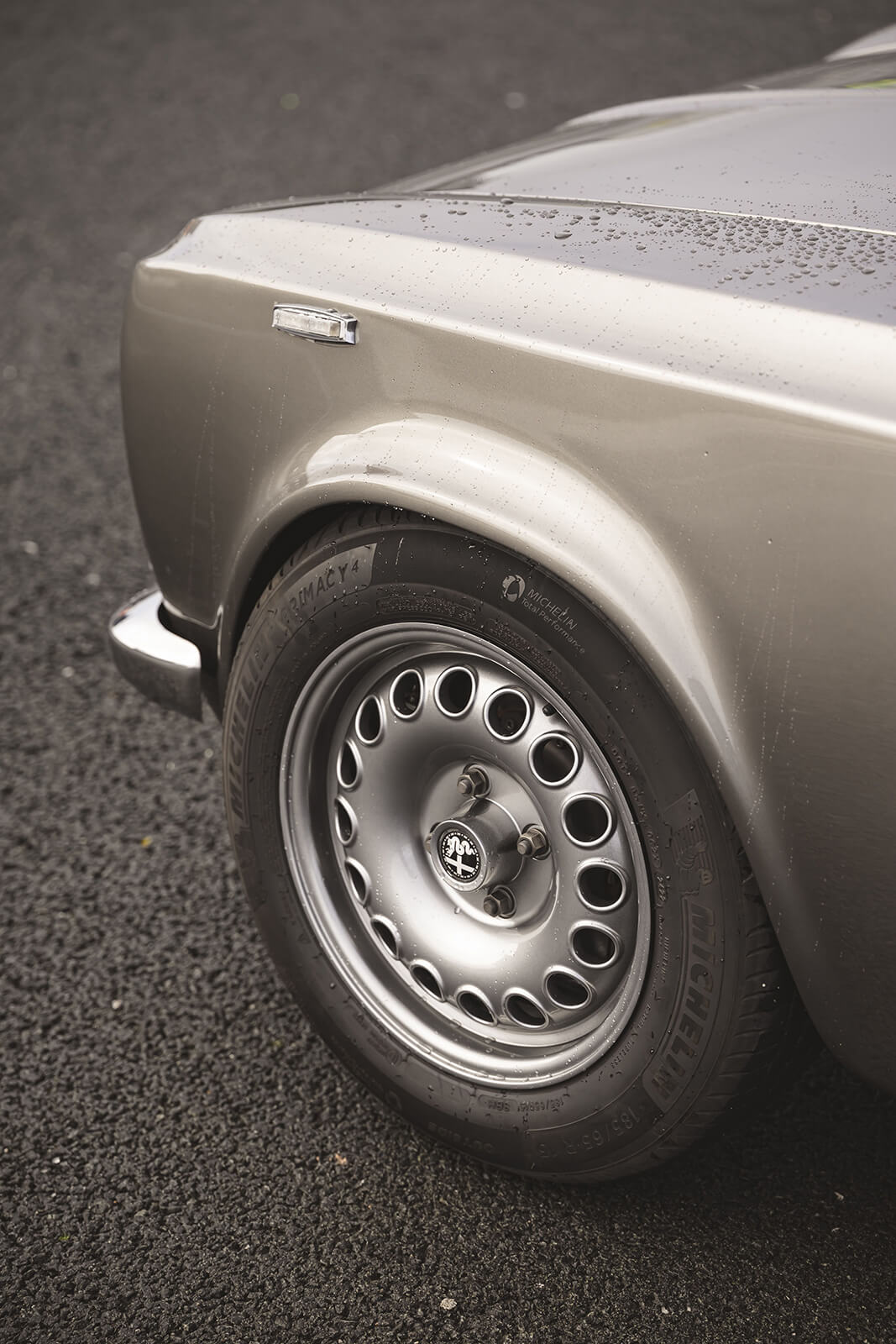
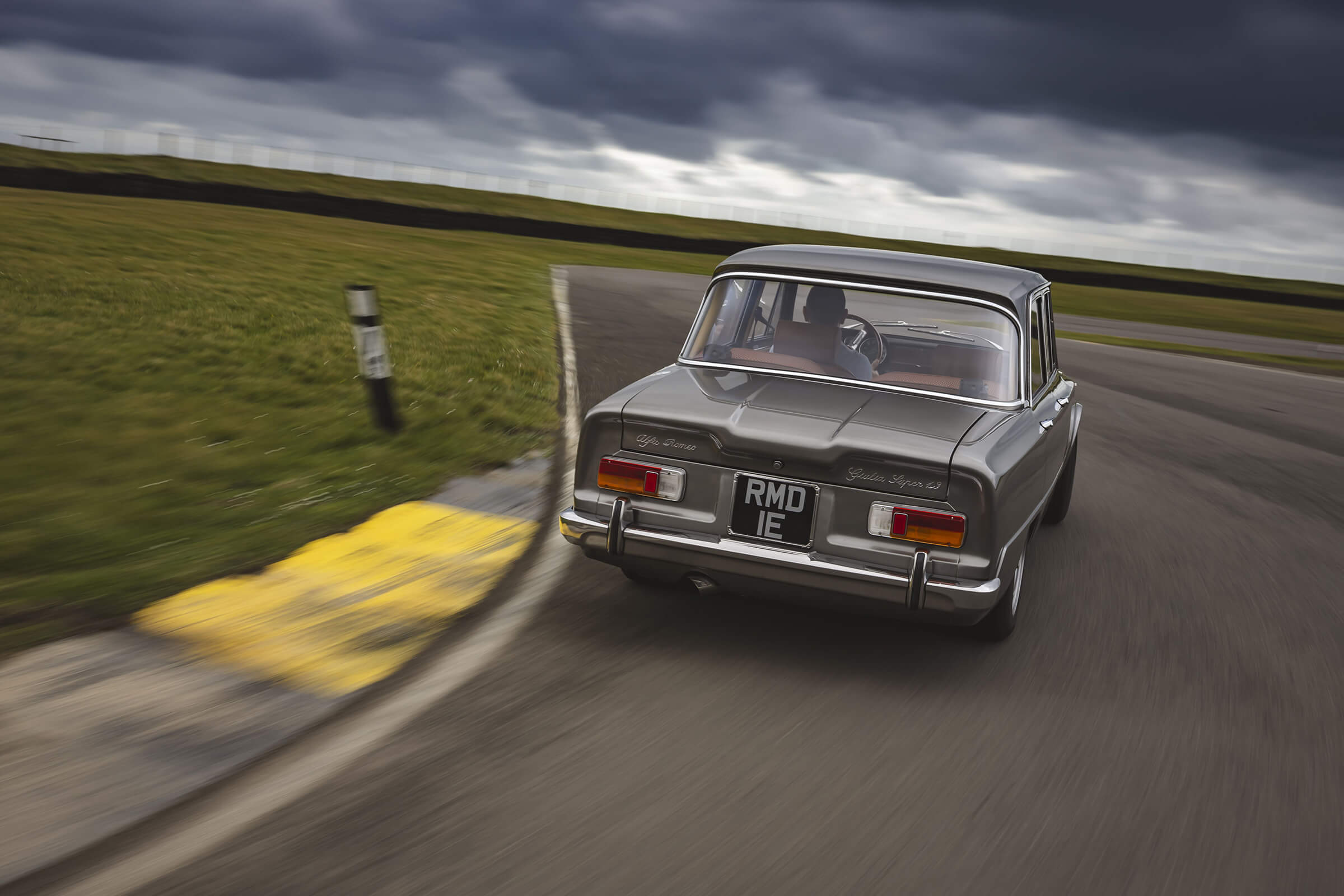
Perhaps the elasticity of the Super-R’s limits is its truly defining feature. I adore the steering feel, the solid race-car-style brake pedal and gearbox. I could listen to that engine climbing up to over 7000 rpm forevermore, but when you underpin all of that motorsport-infused tactility with a chassis that loves to be driven in slip, things start to get inspirational. Turn in on the brakes, and because this car is so light, there’s no sense of the rear wanting to overtake the front. It just shifts the balance enough to let you pick up the throttle hard, get the rear wheels spinning, and then drive out of turns with the diff locked up, the gargling intake at full noise, and this furious little car absolutely in its sweet spot.
On the hedge-lined narrow roads near the track, the Super-R feels more impressive still. Its tiny dimensions create more room to breathe than you’d find in any modern sports car, bar maybe the Miata. The skinny tires provide plenty of grip and response, and the damping and body control are superb. For some, the ride might be a bit too busy (although you can play with the setup, of course), but for me, the added edge of a firm ride suits the wonderfully rorty engine and the car’s innate agility. It just wants to entertain.
Out on the queen’s highway there is, of course, a bit more time to appreciate the beautifully trimmed interior, the amazing view out afforded by spiderweb-thin pillars, and the simple, evocative dashboard with Veglia dials. In fact, it’s the multidimensional appeal of this car that is really at the heart of the whole restomod phenomena. In a world of ubiquitous turbocharging, dual-clutch gearboxes, monster mechanical grip, and ever more downforce, the Alfaholics formula is pretty much irresistible. Don’t believe me? Well, despite the high entry price, the queue for an Alfaholics “full build” stretches to 2030. Yes, really.
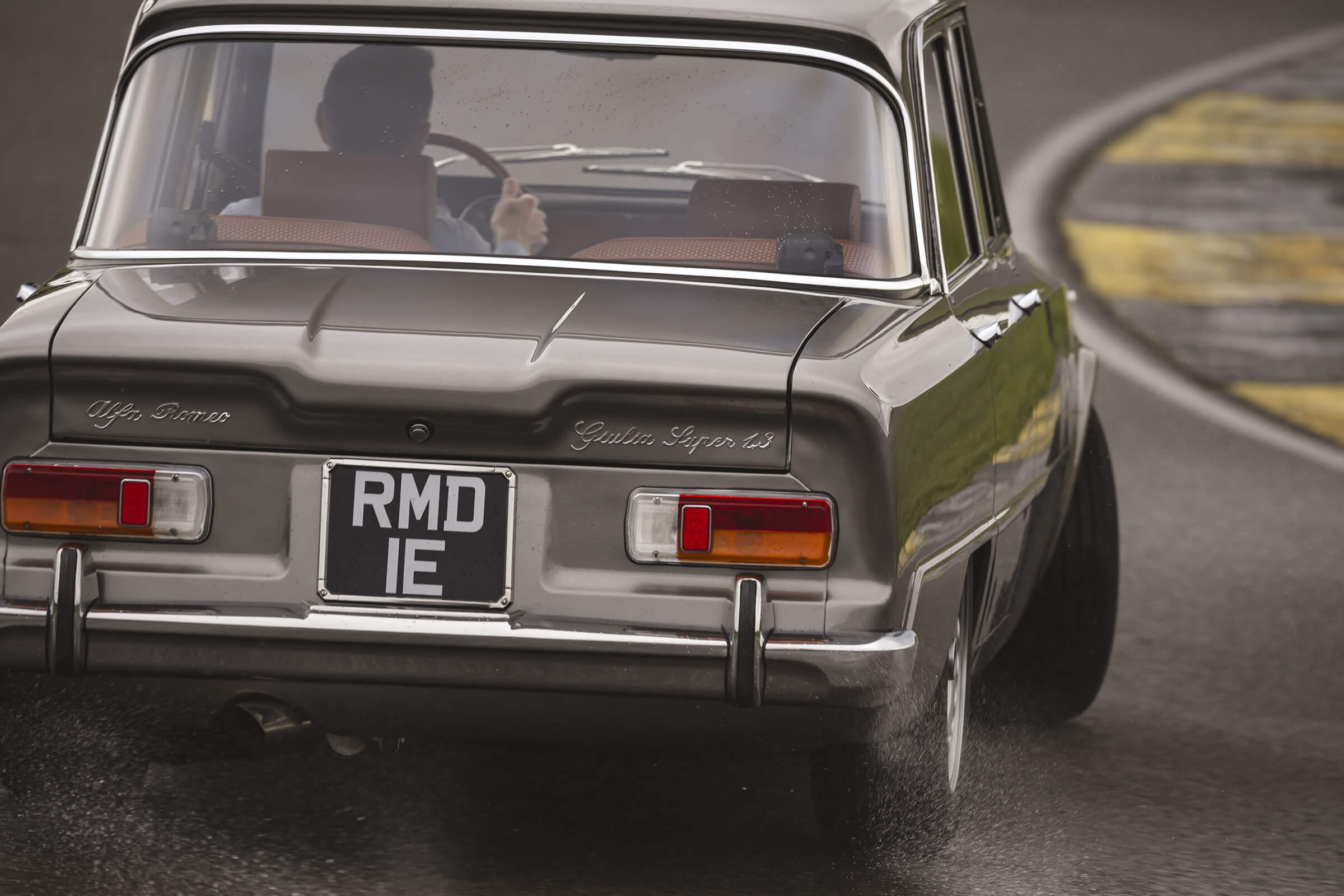
Luckily, the company’s bread and butter remains parts supply. So, if you have an old Giulia, you can buy a full engine package, the adjustable dampers, the six-piston brake upgrade made from aluminum billet, and the Ultraleggera titanium front wishbones, uprights and hubs. It might take a lifetime, but ticking off these parts one by one and bringing your own car up to something close to this specification could be considered a pretty fine legacy. This headline-grabbing top-end stuff is not cheap—for example, a full GTA-R-spec titanium suspension package costs close to $65,000—but there are many more affordable and race-proven parts that will make a tangible difference to those of us for whom the Super-R 270 is forever out of reach. So yeah, this first part of our restomod series is irrational, outrageous, and obsessive. The results though, well, they are spectacular. What price perfection? About $580,000, as it turns out.
